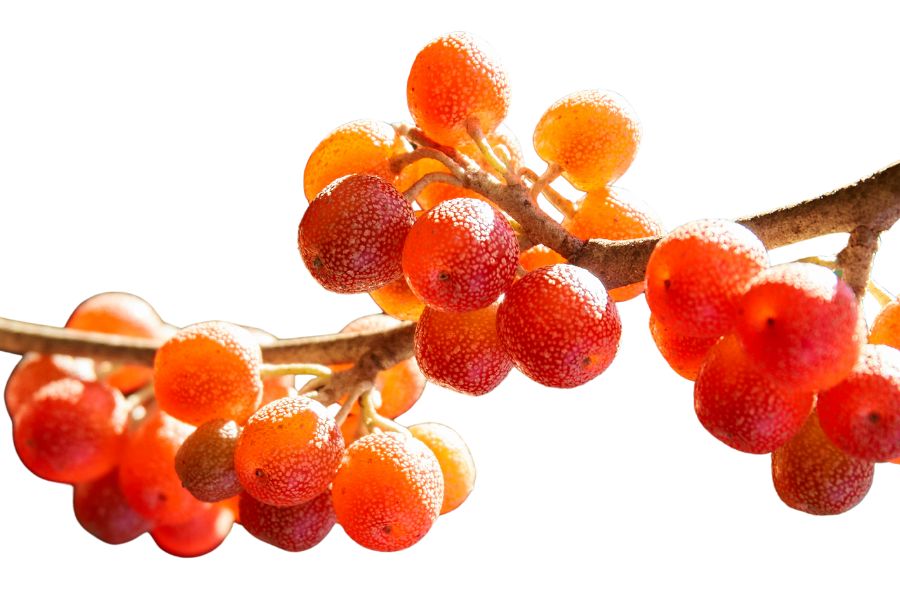You can find edible plants in nearly every part of Michigan, from hardwood forests to marshy lowlands. Dandelion isn’t just a common yard weed—its young leaves, roots, and flowers are all edible in the right season. Sheep sorrel also grows wild here and has a lemony flavor that works well raw or cooked.
Even something like plantain, which often grows between sidewalk cracks, has edible leaves that are packed with fiber. Chicory grows along roadsides and offers bitter leaves and a roasted root that’s long been used as a coffee substitute. These plants don’t demand attention, but they’re there for those who know what to notice.
Plenty of edible plants blend into the landscape because they aren’t dramatic or colorful. But once you learn to identify them, the number of edible species you can find in Michigan expands fast. Knowing a few key features can help you gather a surprisingly diverse mix of useful wild plants.
What We Cover In This Article:
- The Edible Plants Found in the State
- Toxic Plants That Look Like Edible Plants
- How to Get the Best Results Foraging
- Where to Find Forageables in the State
- Peak Foraging Seasons
- The extensive local experience and understanding of our team
- Input from multiple local foragers and foraging groups
- The accessibility of the various locations
- Safety and potential hazards when collecting
- Private and public locations
- A desire to include locations for both experienced foragers and those who are just starting out
Using these weights we think we’ve put together the best list out there for just about any forager to be successful!
A Quick Reminder
Before we get into the specifics about where and how to find these plants and mushrooms, we want to be clear that before ingesting any wild plant or mushroom, it should be identified with 100% certainty as edible by someone qualified and experienced in mushroom and plant identification, such as a professional mycologist or an expert forager. Misidentification can lead to serious illness or death.
All plants and mushrooms have the potential to cause severe adverse reactions in certain individuals, even death. If you are consuming wild foragables, it is crucial to cook them thoroughly and properly and only eat a small portion to test for personal tolerance. Some people may have allergies or sensitivities to specific mushrooms and plants, even if they are considered safe for others.
The information provided in this article is for general informational and educational purposes only. Foraging involves inherent risks.
The Edible Plants Found in the State
Wild plants found across the state can add fresh, seasonal ingredients to your meals:
Wild Leek / Ramp (Allium tricoccum)
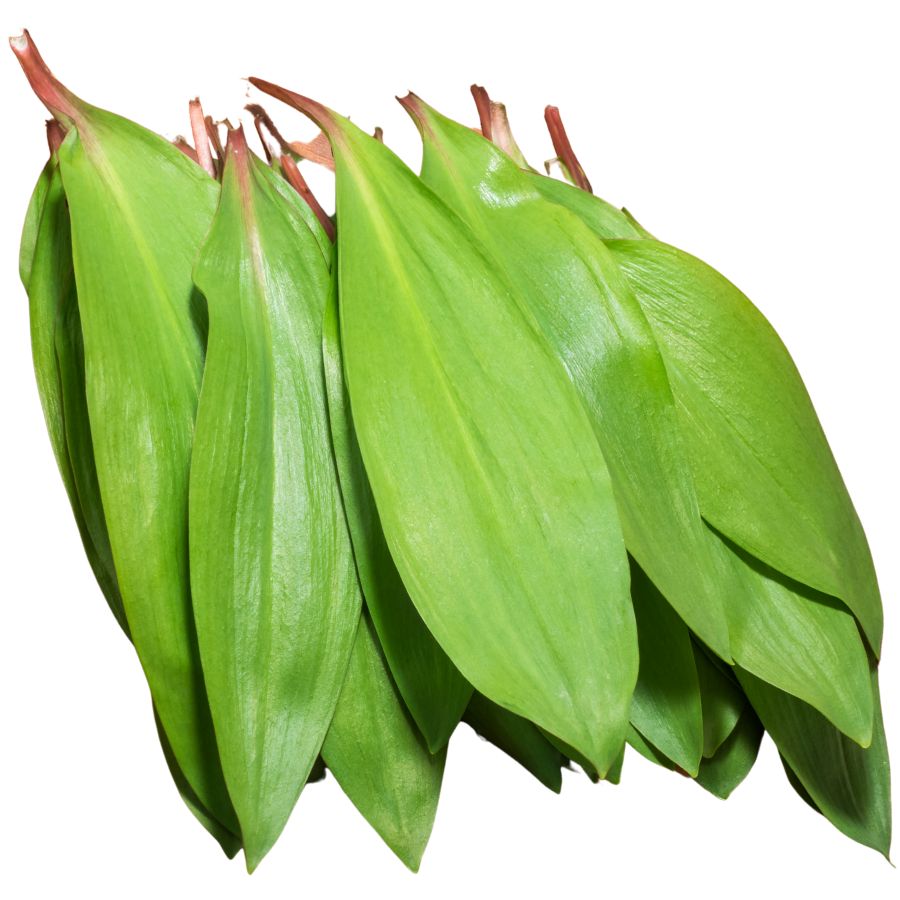
Known as wild leek, ramp, or ramson, this flavorful plant is famous for its broad green leaves and slender white stems. It grows low to the ground and gives off a strong onion-like scent when bruised, which can help you tell it apart from toxic lookalikes like lily of the valley.
If you give it a taste, you will notice a bold mix of onion and garlic flavors, with a tender texture that softens even more when cooked. People often sauté the leaves and stems, pickle the bulbs, or blend them into pestos and soups.
The entire plant can be used for cooking, but the leaves and bulbs are the most prized parts. It is important not to confuse it with similar-looking plants that do not have the signature onion smell when crushed.
Wild leek populations have declined in some areas because of overharvesting, so it is a good idea to only take a few from any given patch. When harvested thoughtfully, these vibrant greens can add a punch of flavor to just about anything you make.
Stinging Nettle (Urtica dioica)

Stinging nettle is also known as burn weed or devil leaf, and it definitely earns those names. The tiny hairs on its leaves and stems can leave a painful, tingling rash if you brush against it raw, so always wear gloves when handling it.
Once it’s cooked or dried, those stingers lose their punch, and the leaves turn mild and slightly earthy in flavor. The texture softens too, making it a solid substitute for spinach in soups, pastas, or even as a simple sauté.
The young leaves and tender tops are what you want to collect. Avoid the tough lower stems and older leaves, which can be gritty or unpleasant to chew.
Some people confuse stinging nettle with purple deadnettle or henbit, but those don’t sting and have more rounded, fuzzy leaves. If the plant doesn’t make your skin react, it’s not stinging nettle.
Dandelion (Taraxacum officinale)
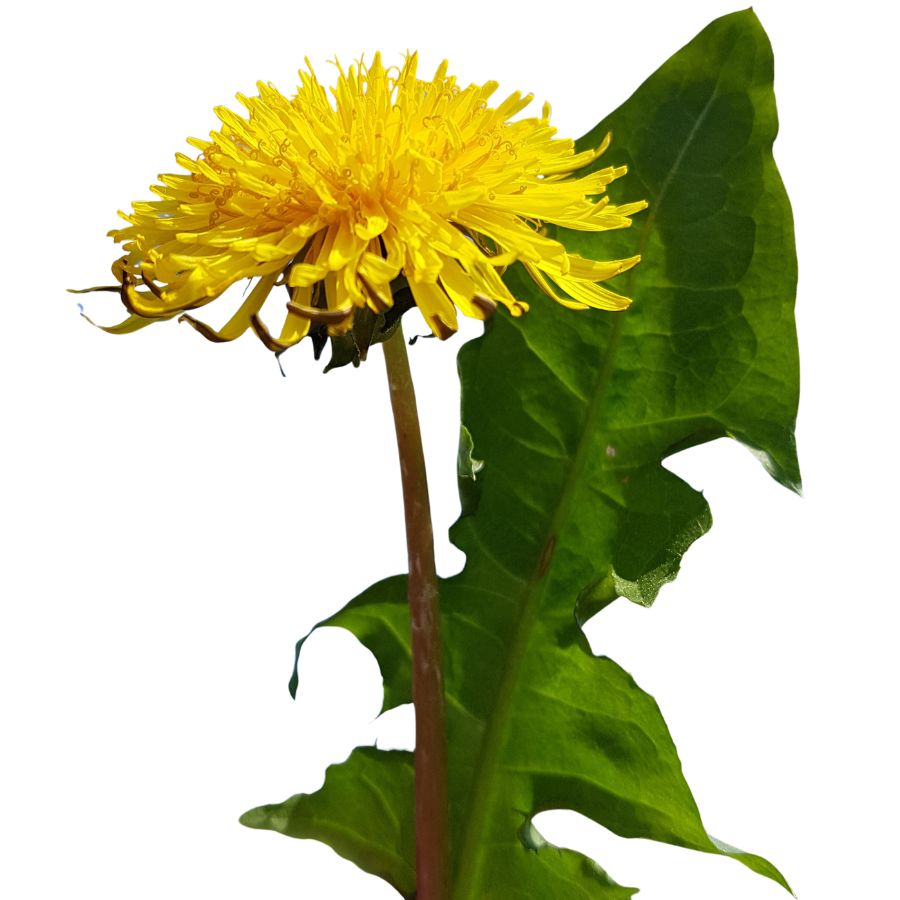
Bright yellow flowers and jagged, deeply toothed leaves make dandelions easy to spot in open fields, lawns, and roadsides. You might also hear them called lion’s tooth, blowball, or puffball once the flowers turn into round, white seed heads.
Every part of the dandelion is edible, but you will want to avoid harvesting from places treated with pesticides or roadside areas with heavy car traffic. Besides being a food source, dandelions have been used traditionally for simple herbal remedies and natural dye projects.
Young dandelion leaves have a slightly bitter, peppery flavor that works well in salads or sautés, and the flowers can be fried into fritters or brewed into tea. Some people even roast the roots to make a coffee substitute with a rich, earthy taste.
One thing to watch out for is cat’s ear, a common lookalike with hairy leaves and branching flower stems instead of a single, hollow one. To make sure you have a true dandelion, check for a smooth, hairless stem that oozes a milky sap when broken.
Lamb’s Quarters (Chenopodium album)
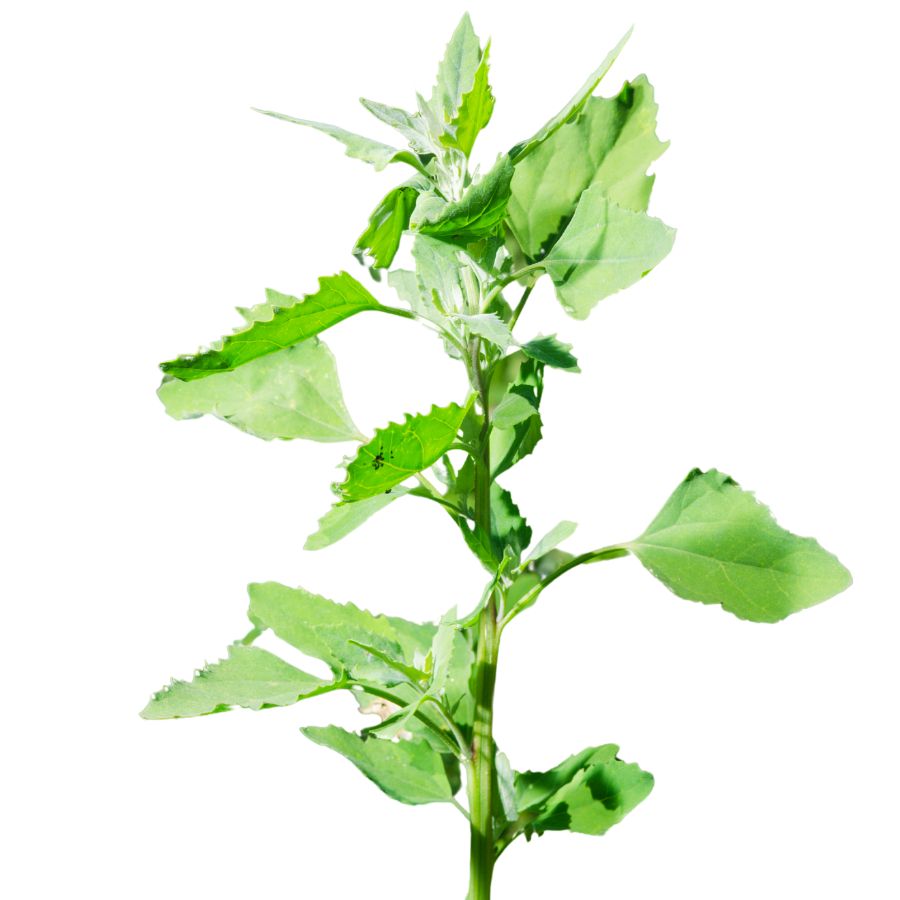
Lamb’s quarters, also called wild spinach and pigweed, has soft green leaves that often look dusted with a white, powdery coating. The leaves are shaped a little like goose feet, with slightly jagged edges and a smooth underside that feels almost velvety when you touch it.
A few plants can be confused with lamb’s quarters, like some types of nightshade, but true lamb’s quarters never have berries and its leaves are usually coated in that distinctive white bloom. Always check that the stems are grooved and not round and smooth like the poisonous lookalikes.
When you taste lamb’s quarters, you will notice it has a mild, slightly nutty flavor that gets richer when cooked. The young leaves, tender stems, and even the seeds are all edible, but you should avoid eating the older stems because they become tough and stringy.
People often sauté lamb’s quarters like spinach, blend it into smoothies, or dry the leaves for later use in soups and stews. It is also rich in oxalates, so you will want to cook it before eating large amounts to avoid any problems.
Milkweed (Asclepias syriaca)
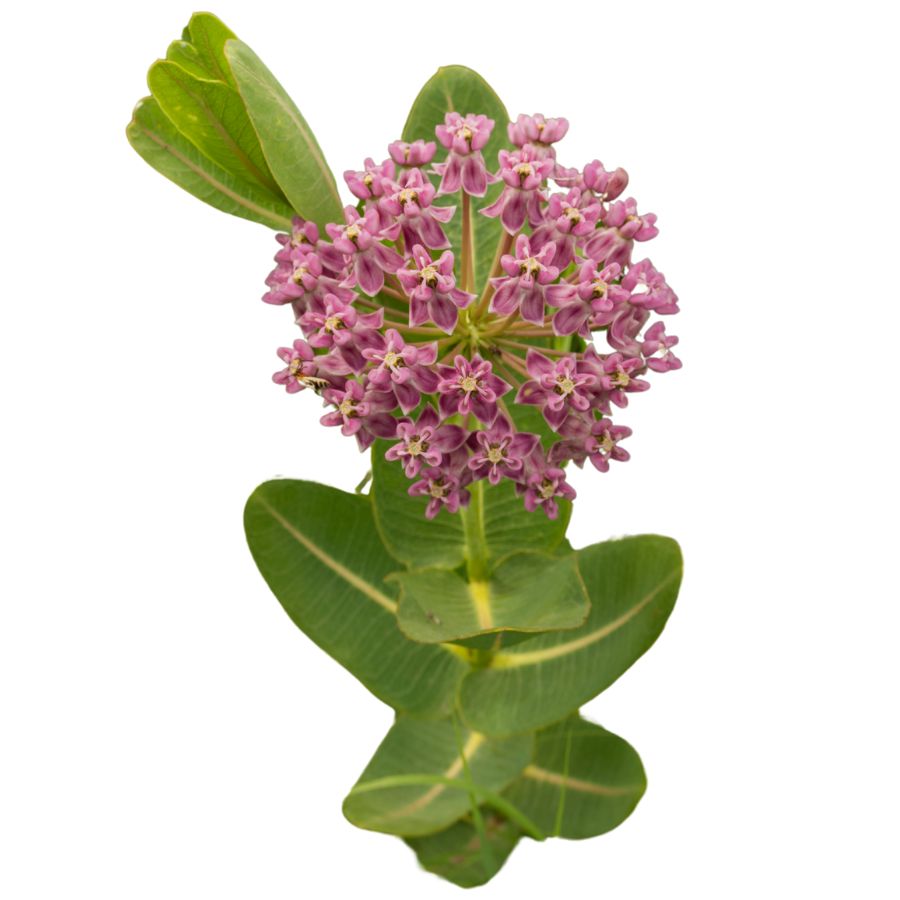
Known for its thick stems, broad leaves, and clusters of pinkish-purple flowers, common milkweed is sometimes called silkweed or butterfly flower. When you snap a stem or leaf, it releases a milky sap that helps you tell it apart from other plants that can be harmful.
If you want to try it in the kitchen, focus on gathering the young shoots, the tightly closed flower buds, and the small, immature pods. These parts have a mild, slightly sweet flavor when cooked, and their soft texture makes them a good addition to soups, sautés, and fritters.
Getting it ready to eat takes a little care, since boiling the plant parts in several changes of water helps remove bitterness and unwanted compounds. Some people also like to steam the buds or fry the pods lightly to bring out their best taste.
Although monarch caterpillars rely on this plant for survival, it has a long history of being used by people as well. Watch out for lookalikes like dogbane, though, since they share the same milky sap but are dangerously toxic if eaten.
Cattail (Typha latifolia)
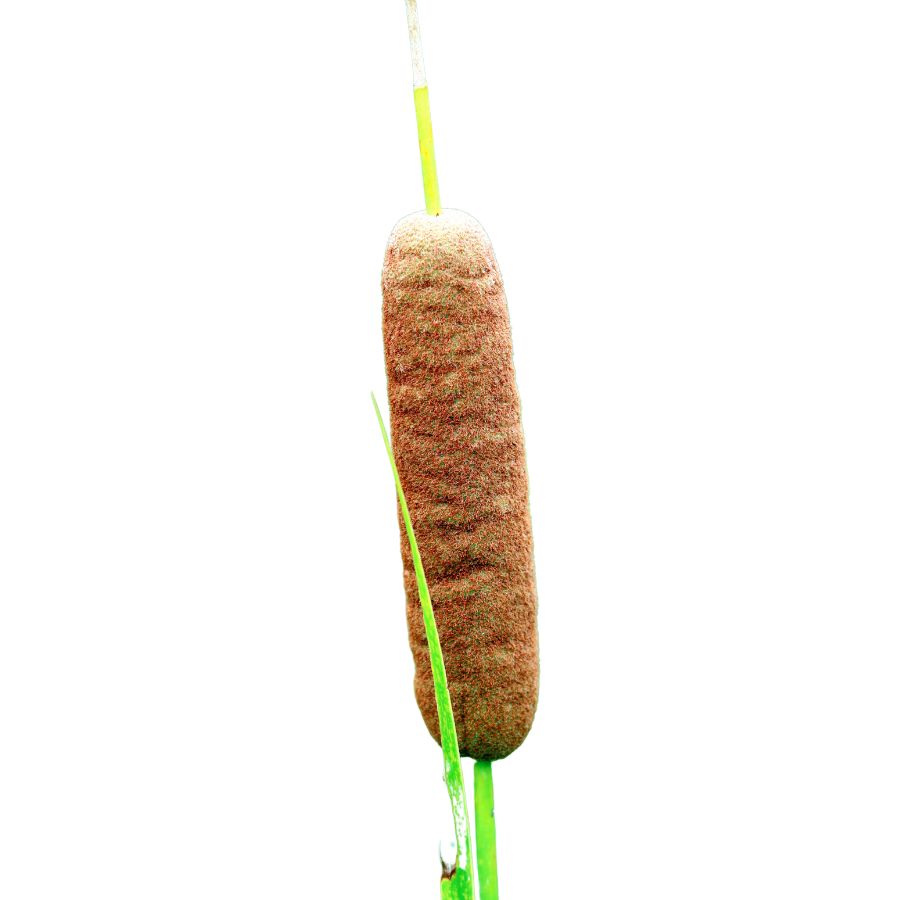
Cattails, often called bulrushes or corn dog grass, are easy to spot with their tall green stalks and brown, sausage-shaped flower heads. They grow thickly along the edges of ponds, lakes, and marshes, forming dense stands that are hard to miss.
Almost every part of the cattail is edible, including the young shoots, flower heads, and starchy rhizomes. You can eat the tender shoots raw, boil the flower heads like corn on the cob, or grind the rhizomes into flour for baking.
Besides food, cattails have long been used for making mats, baskets, and even insulation by weaving the dried leaves and using the fluffy seeds. Their combination of usefulness and abundance has made them an important survival plant for many cultures.
One thing you need to watch for is young cattail shoots being confused with similar-looking plants like iris, which are toxic. A real cattail shoot will have a mild cucumber-like smell when you snap it open, while iris plants smell bitter or unpleasant.
Jerusalem Artichoke (Helianthus tuberosus)
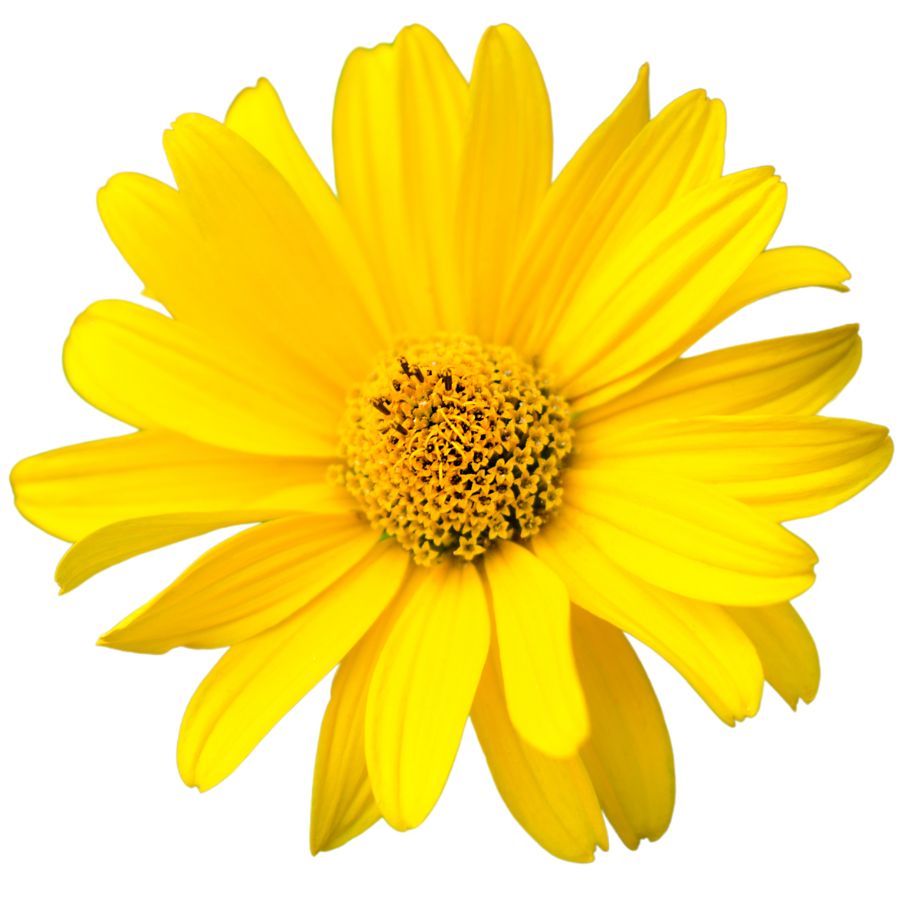
Jerusalem artichoke grows tall with sunflower-like blooms and has knobby underground tubers. The tubers are tan or reddish and look a bit like ginger root, though they belong to the sunflower family.
The part you’re after is the tuber, which has a nutty, slightly sweet flavor and a crisp texture when raw. You can roast, sauté, boil, or mash them like potatoes, and they hold their shape well in soups and stir-fries.
Some people experience gas or bloating after eating sunchokes due to the inulin they contain, so it’s a good idea to try a small amount first. Cooking them thoroughly can help reduce the chances of digestive discomfort.
Sunchokes don’t have many dangerous lookalikes, but it’s important not to confuse the plant with other sunflower relatives that don’t produce tubers. The above-ground part resembles a small sunflower, but it’s the knotted, underground tubers that are worth digging up.
Black Raspberry (Rubus occidentalis)
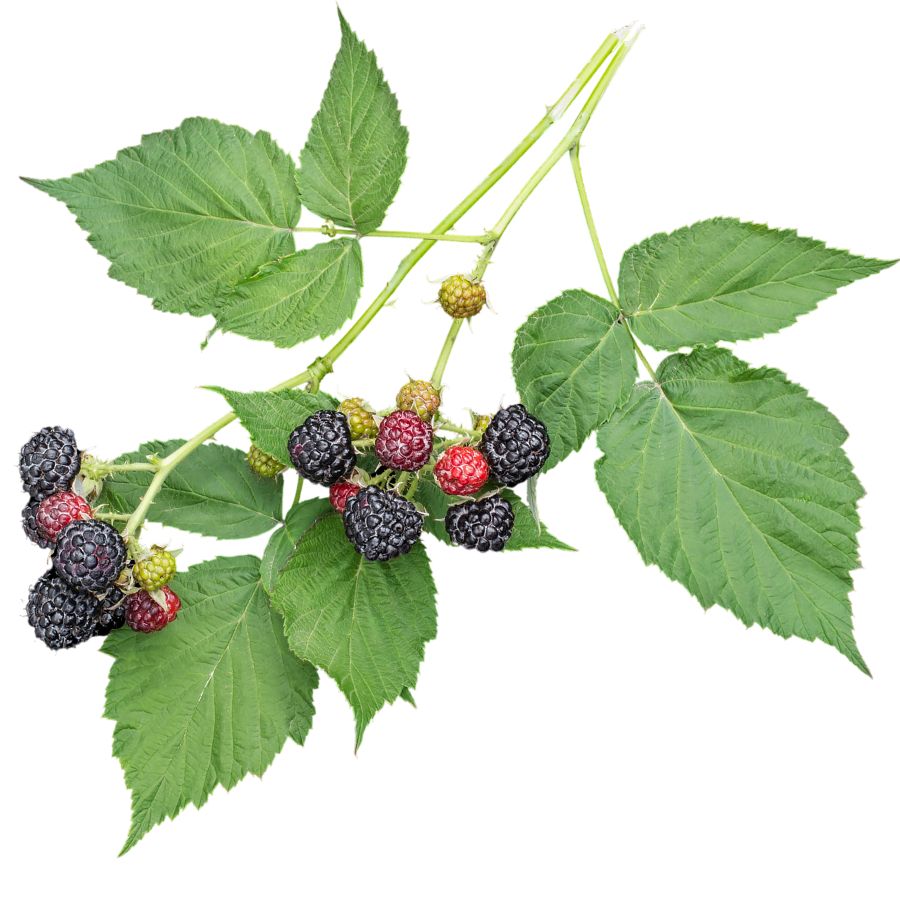
Black raspberries grow on arching canes covered with small, hooked thorns. The berries start out red before ripening to a deep purplish-black color, and they have a hollow core when picked.
The fruit tastes sweet with a mild tartness, and the texture is juicy but slightly firmer than a red raspberry. People often use black raspberries for jams, pies, syrups, and even simple fruit leathers made at home.
Blackberry and wineberry are common lookalikes, which can confuse foragers at first glance. Black raspberry canes usually have a whitish coating and smaller thorns compared to the shinier, stouter canes of a blackberry.
You can eat the ripe fruit raw or cooked, but the leaves are sometimes brewed into teas after proper drying. It is best to avoid the green, unripe berries, as they are tough and lack the flavor that makes black raspberry such a favorite.
Blackberry (Rubus spp.)
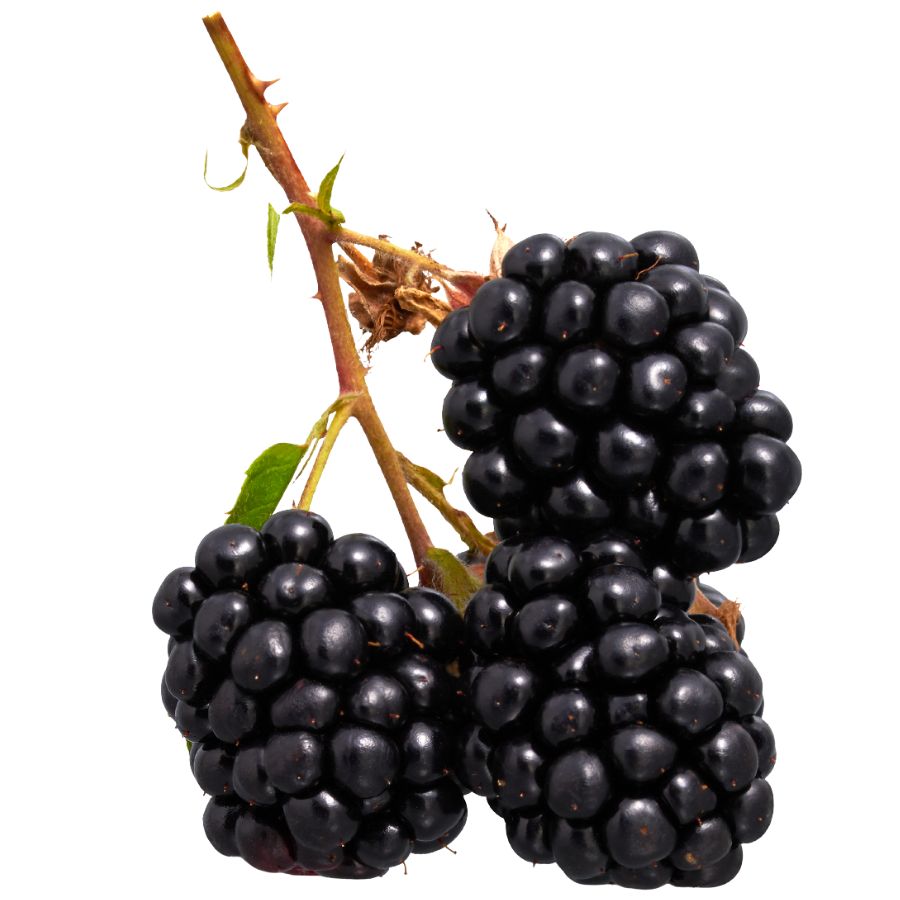
Blackberry, also known as brambleberry or dewberry, grows on thick, thorny canes that can arch and spread across the ground. The leaves are usually serrated, and the fruit ripens from green to red before turning deep purple or black when fully ready to pick.
The berries have a sweet, tangy flavor with a soft, juicy texture that easily bursts in your mouth. You can eat them raw, bake them into pies and cobblers, or preserve them by making jams and jellies.
Only the ripe fruit of the blackberry plant is edible, while the stems and leaves are not usually eaten.
Some plants like black raspberry can look similar, but black raspberries are hollow in the center when picked while blackberries have a solid core. It’s important to avoid confusing blackberries with nightshade berries, which grow on upright plants without thorny vines and can be toxic.
An interesting thing about blackberries is that they are technically not a single berry but a cluster of small drupelets packed together.
Wild Strawberry (Fragaria virginiana)
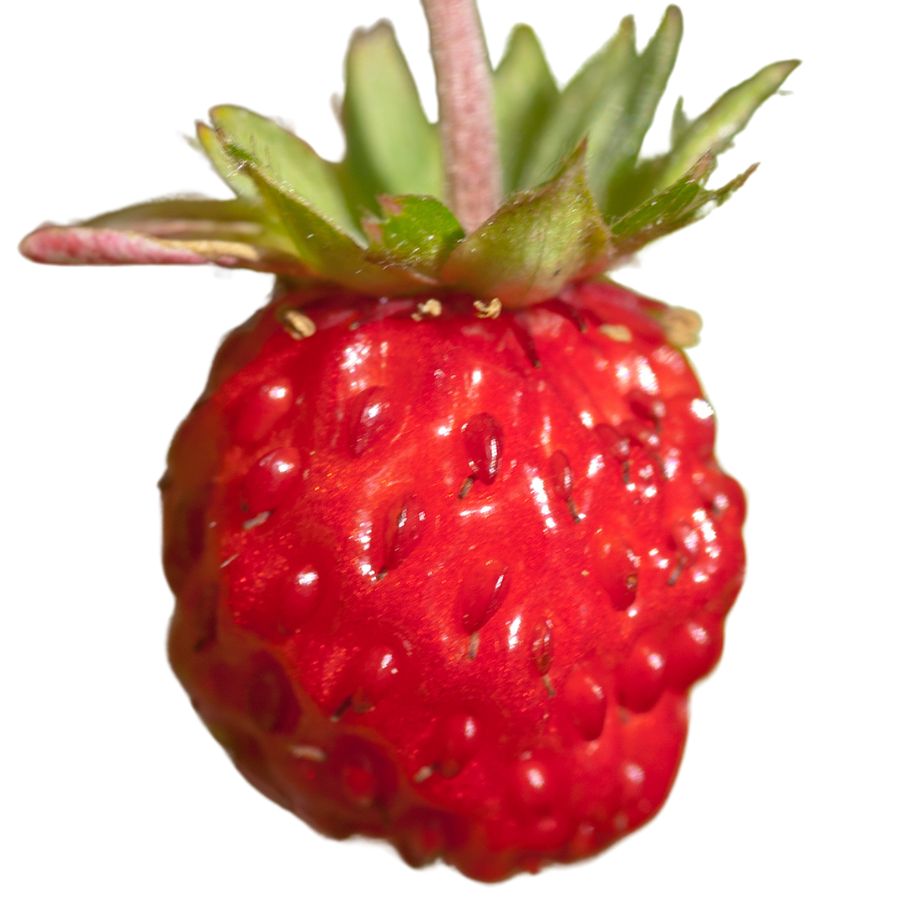
Wild strawberry, sometimes called Virginia strawberry or mountain strawberry, grows low to the ground with three-part leaves that have jagged edges. The small white flowers with yellow centers eventually give way to tiny, bright red fruits nestled close to the soil.
The fruits are sweet with a burst of tartness, and their texture is much softer than the large cultivated strawberries you find in stores. You can eat them raw, mix them into jams, or bake them into pies for a rich, fruity flavor.
Wild strawberry can sometimes be confused with mock strawberry, which has similar leaves but produces dry, flavorless fruits and yellow flowers instead of white. Always check the flower color and taste a small piece before collecting more.
Only the berries and the tender young leaves of wild strawberry are edible, with the leaves often brewed into teas. Be careful not to overharvest because these plants grow slowly and support plenty of small wildlife.
Blueberry (Vaccinium angustifolium)
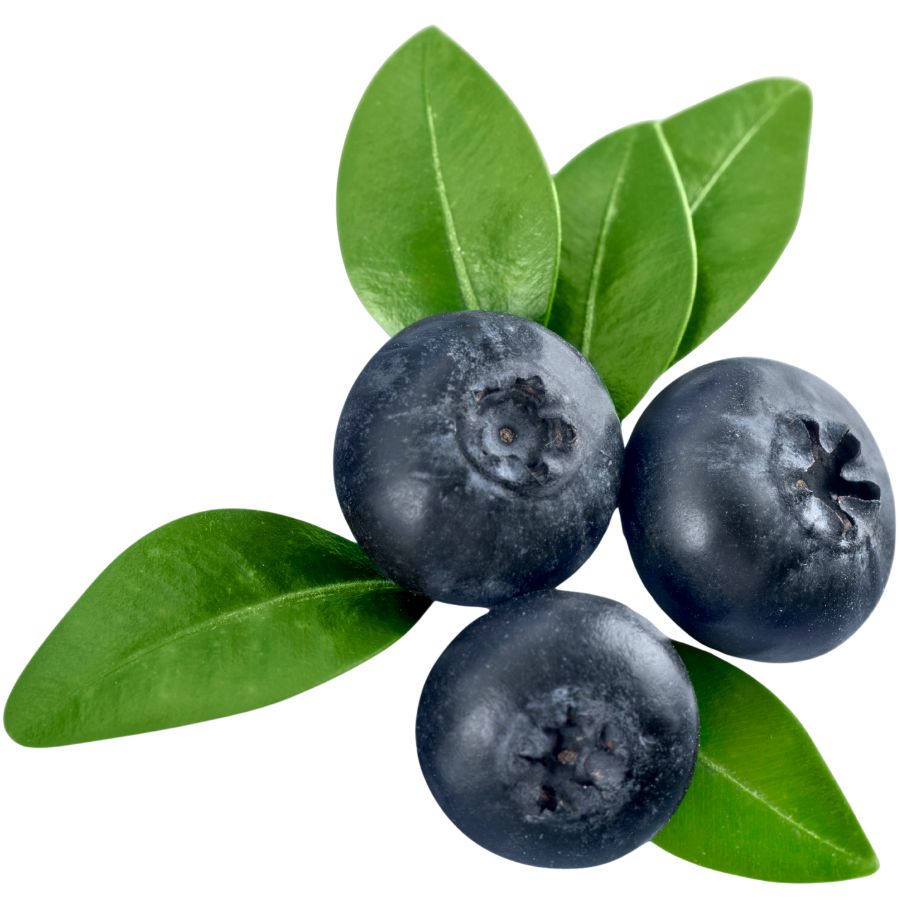
Blueberry, sometimes called highbush or lowbush blueberry depending on the type, grows as a shrub with smooth-edged, oval leaves and clusters of small white or pinkish bell-shaped flowers. The berries start green and ripen to a deep blue with a dusty-looking skin that easily rubs off.
A few lookalikes can confuse foragers, like the berries of Virginia creeper or pokeweed, but the differences are clear when you know what to check. True blueberries grow on woody shrubs and have a five-pointed crown on the bottom of each berry, while dangerous lookalikes often grow on vines or have no crown at all.
Blueberries have a sweet, sometimes tangy flavor and a juicy texture that makes them great for fresh eating. You can also bake them into pies, simmer them into jams, or dry them for snacks.
Only the ripe berries are eaten, while the leaves and stems are usually left alone.
Interestingly, blueberries is that they contain natural pigments that can turn recipes and even your fingers a deep purple when handled.
Elderberry (Sambucus nigra subsp. canadensis)
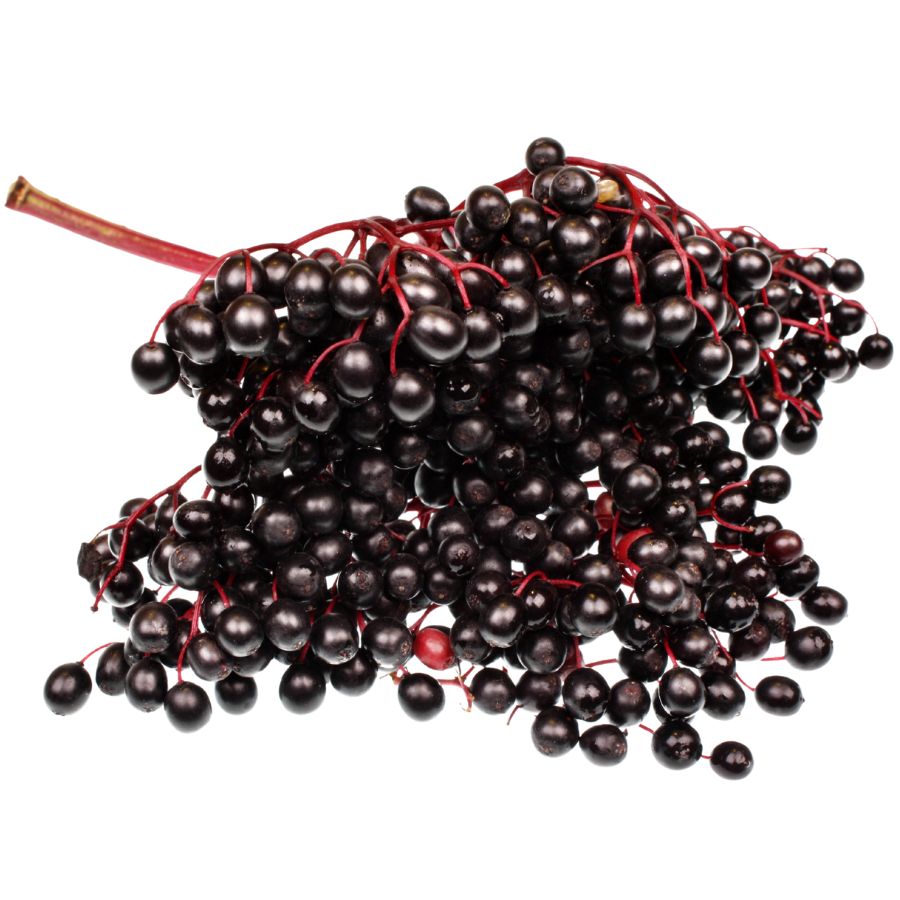
Elderberry is often called American elder, common elder, or sweet elder. It grows as a large, shrubby plant with clusters of tiny white flowers that eventually turn into deep purple to black berries.
You can recognize elderberry by its compound leaves with five to eleven serrated leaflets and its flat-topped flower clusters. One important thing to watch out for is its toxic lookalikes, like pokeweed, which has very different smooth-edged leaves and reddish stems.
The ripe berries have a tart, almost earthy flavor and a soft texture when cooked. People usually cook elderberries into syrups, jams, pies, or wine because eating raw berries can cause nausea.
Only the ripe, cooked berries and flowers are edible, while the leaves, stems, and unripe berries are toxic. Always take care to strip the berries cleanly from their stems before using them, as even small bits of stem can cause problems.
Autumn Olive (Elaeagnus umbellata)
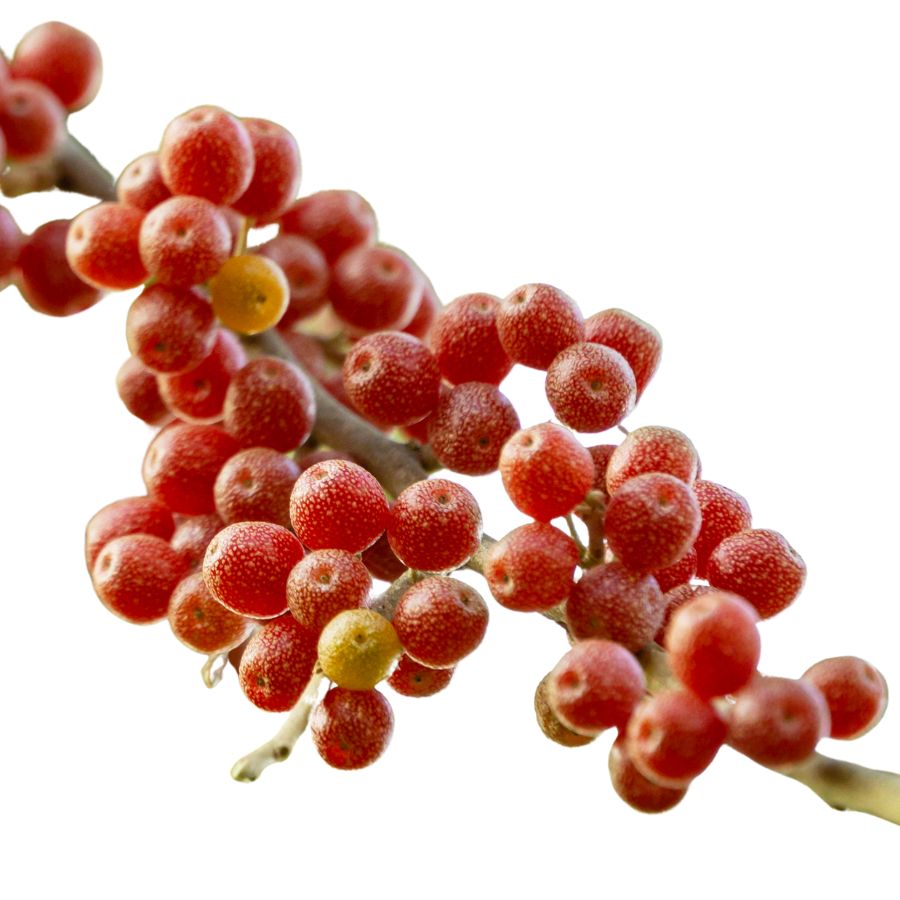
With its silver-dusted leaves and small, speckled red fruits, autumn olive—also called silverberry or Japanese silverberry—has made its way into many thickets and field edges. The fruit is edible, tart, and slick-skinned, with a burst of sourness that mellows in cooked preparations.
People often turn autumn olive into jelly, sauces, or fermented beverages to tame the intense flavor. You can also dehydrate the berries into a powder for use in baked goods.
Some confuse it with Russian olive, which grows similar leaves but bears dry, yellow fruit instead. Stick to harvesting just the berries, as the rest of the plant doesn’t have any culinary use.
What makes autumn olive particularly interesting is its nitrogen-fixing ability, which helps it thrive where other plants struggle—but that same trait is also why it spreads so aggressively. Still, the fruit is safe and edible, and one of the few wild berries with such a high lycopene content.
Garlic Mustard (Alliaria petiolata)
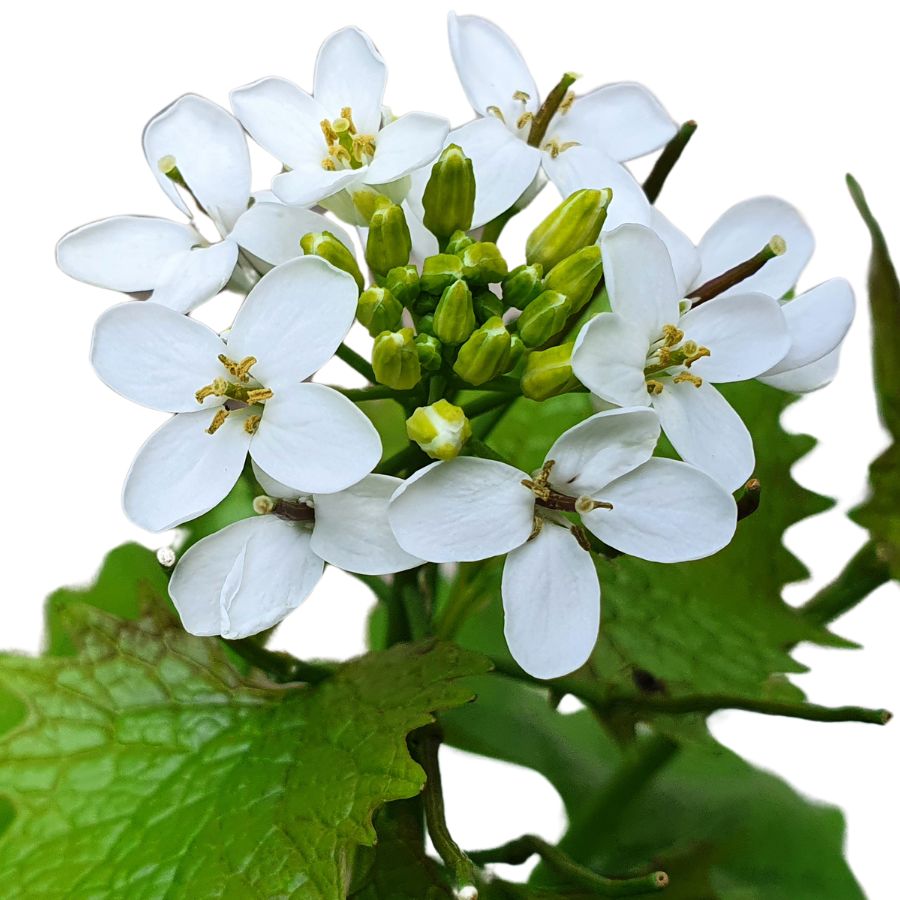
Garlic mustard, sometimes called poor man’s mustard or hedge garlic, has heart-shaped leaves with scalloped edges and small white four-petaled flowers. When you crush the leaves between your fingers, they release a strong garlic-like smell that makes it stand out from similar-looking plants.
The flavor of garlic mustard is sharp and garlicky at first bite, with a peppery bitterness that lingers. Its young leaves are often blended into pestos, stirred into soups, or tossed into salads to add a punch of flavor.
You can also use the roots, which have a taste similar to horseradish when fresh. The seed pods are sometimes collected and used as a spicy seasoning after being dried and crushed.
If you decide to gather some, make sure not to confuse it with plants like ground ivy or purple deadnettle, which do not have that garlic aroma. Stick to harvesting the leaves, flowers, seeds, and roots, and avoid anything with a fuzzy texture or a very different smell.
Wild Carrot (Daucus carota)
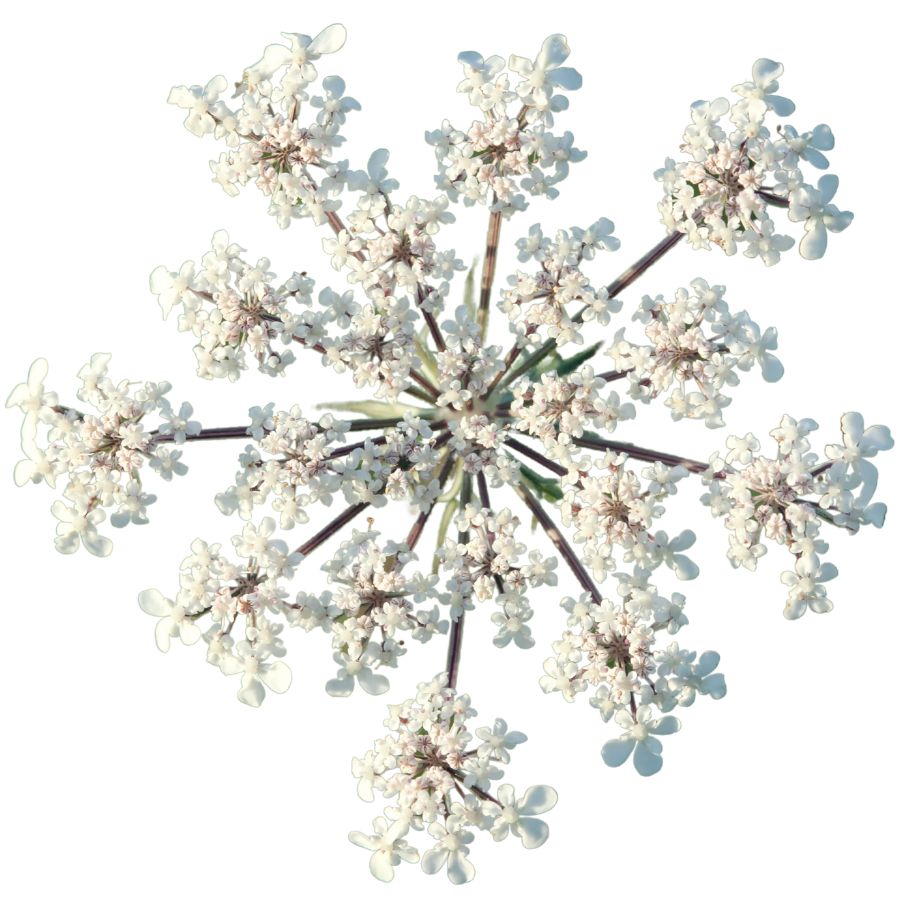
Wild carrot, which you might know as Queen Anne’s lace, grows a slender, white taproot that’s tough and fibrous when mature. When it’s young, the root has a faint carrot scent and a slightly earthy taste that comes through best when boiled or slow-roasted.
The most dangerous thing about wild carrot is how closely it resembles poison hemlock, which has smooth, hairless stems with purple blotches. Wild carrot has fine hairs along its stems and a single dark floret in the center of its flat white flower clusters.
If you’re going to try it, stick to the root and avoid the leaves and stems, which can cause skin irritation in some people. The root is usually peeled, chopped, and cooked like a tougher version of a garden carrot, but don’t expect it to be sweet.
One interesting trait is how the flower head curls into a tight, nest-like shape as it matures. This plant’s close relatives include common garden carrots, but wild ones grow thinner, drier, and with a much stronger flavor.
Wild Mint (Mentha arvensis)

You’re probably familiar with the strong scent of wild mint, which comes from the essential oils concentrated in its leaves. It has square stems, lance-shaped leaves with slightly toothed edges, and pale lilac flower clusters.
The fresh leaves can be eaten raw, cooked into soups, or muddled into drinks for a crisp flavor. Expect a bright, menthol-like kick with a hint of sweetness.
False mint species like purple deadnettle grow in similar spots but lack the menthol smell and have fuzzy leaves. If the plant doesn’t smell like mint, it probably isn’t.
Stick to the leaves and younger stems for eating because the woody stalks aren’t palatable. Wild mint also holds up well when dried and stored for tea or seasoning.
Watercress (Nasturtium officinale)
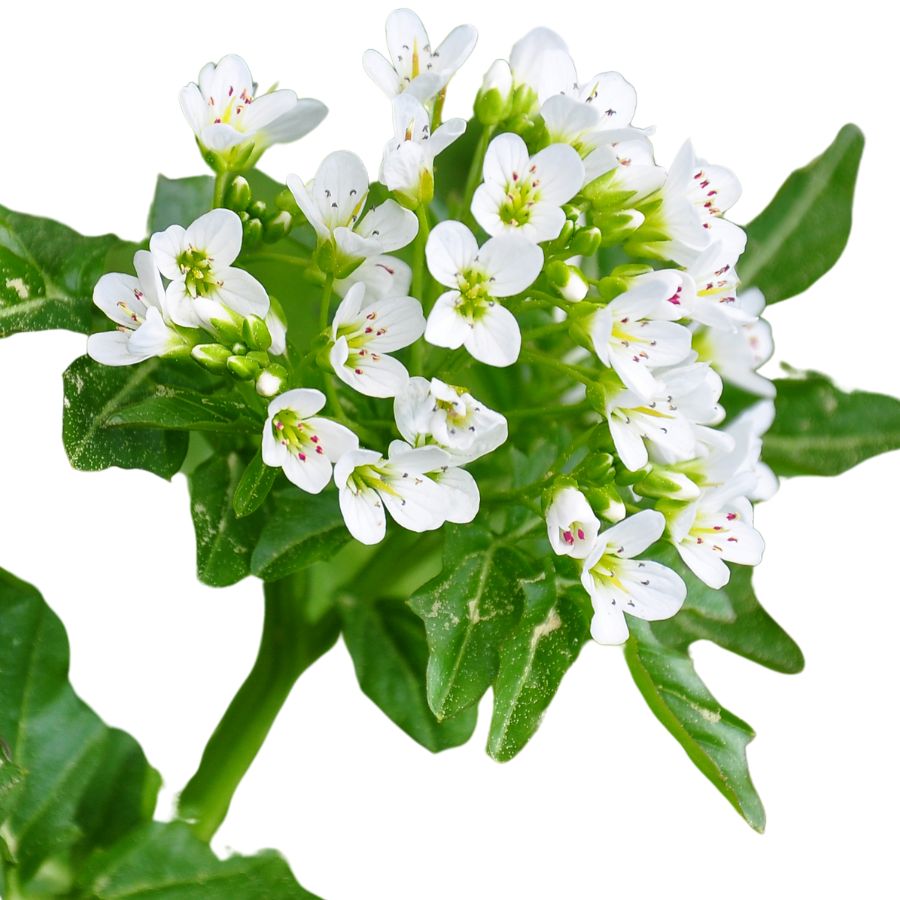
Watercress, also known as yellowcress or garden cress, is an aquatic plant with small, rounded green leaves and hollow stems that often float along the water’s surface. It usually grows in dense mats, and the bright green color is one of the easiest ways to spot it in clear, shallow streams and ponds.
Besides being a popular edible green, watercress has been traditionally used in herbal remedies, especially for boosting digestion and respiratory health.
The leaves and stems are edible, offering a crisp texture and a peppery, slightly spicy taste that can remind you of arugula. People often enjoy it raw in salads, blended into soups, or lightly wilted into stir-fries for a fresh bite.
Stick to eating the leaves and stems, and avoid any parts that look yellowed or slimy, since healthy watercress should always look vibrant and clean.
Watercress has a few lookalikes like lesser celandine or young wild mustard, but true watercress has a distinct sharp flavor and tends to grow only in moving, clean water. Always double-check your identification, because gathering from stagnant or contaminated water sources can expose you to harmful bacteria or parasites.
Groundnut (Apios americana)

Groundnut is also called potato bean or Indian potato, and it grows as a climbing vine with clusters of pinkish-purple flowers. The part most people go for is the underground tuber, which looks a bit like a small, knobby chain of beads.
The flavor is richer than a regular potato, with a nutty, earthy taste and a dense, almost chestnut-like texture when cooked. It holds up well in soups and stews, or you can boil and mash it like a root vegetable.
Some people slice it thin and roast it until crisp, while others slow-cook it to bring out a sweeter taste. The vine also produces beans, but the root is what’s usually eaten.
There are a few vines that resemble groundnut, but many of those don’t have the same distinctive flower clusters or tend to lack the beadlike roots. Always make sure you’re digging up the right plant before cooking it.
Chicory (Cichorium intybus)
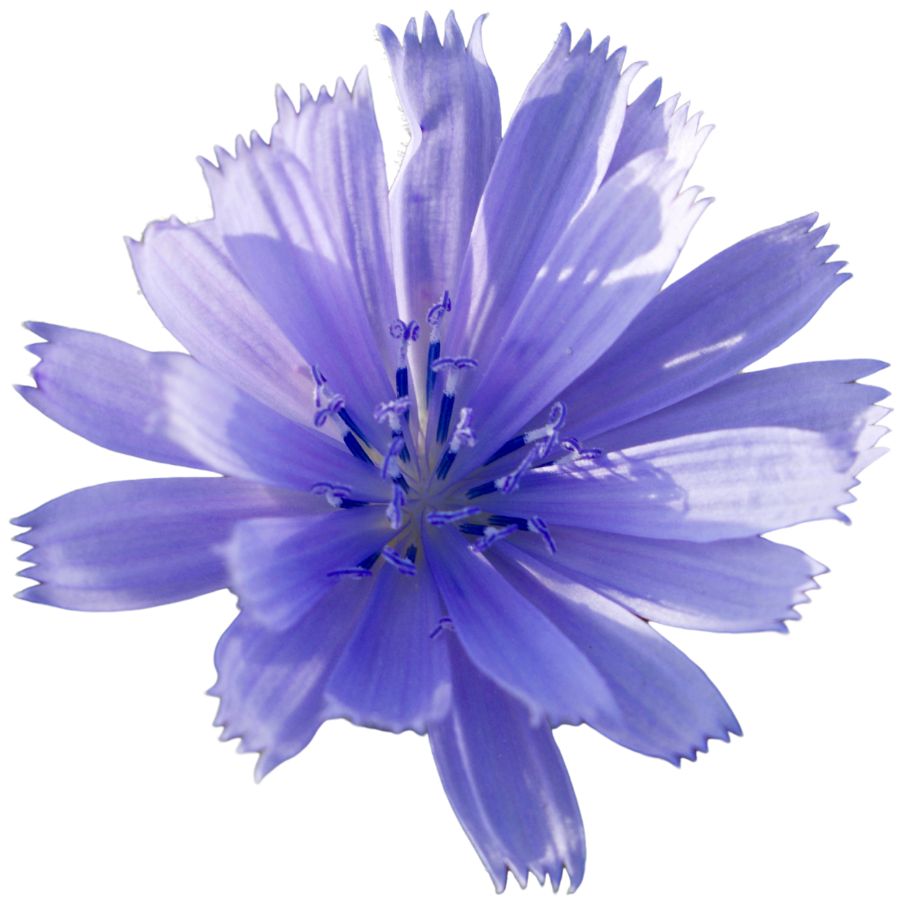
Chicory has bright blue flowers that open in the morning and close by afternoon. Its jagged leaves grow in a rosette close to the ground and can resemble dandelion leaves, but dandelions don’t have the same thick, hairy stems.
The leaves are bitter and slightly earthy, often compared to dandelion greens but with a stronger flavor. You can blanch or sauté them to mellow the bitterness, or chop them raw into salads if you like a sharper bite.
Its roots are the most commonly used part, especially when roasted and ground to mix into coffee or brewed as a caffeine-free drink on their own. They’re dense and woody, and once roasted, they take on a toasty, nutty flavor that balances well with richer foods.
Avoid confusing chicory with wild lettuce, which can grow in similar areas but has a milky sap and a more unpleasant taste. Chicory doesn’t have any toxic lookalikes, but the strong bitterness of mature leaves can be off-putting if you’re not expecting it.
Prickly Wild Rose (Rosa acicularis)
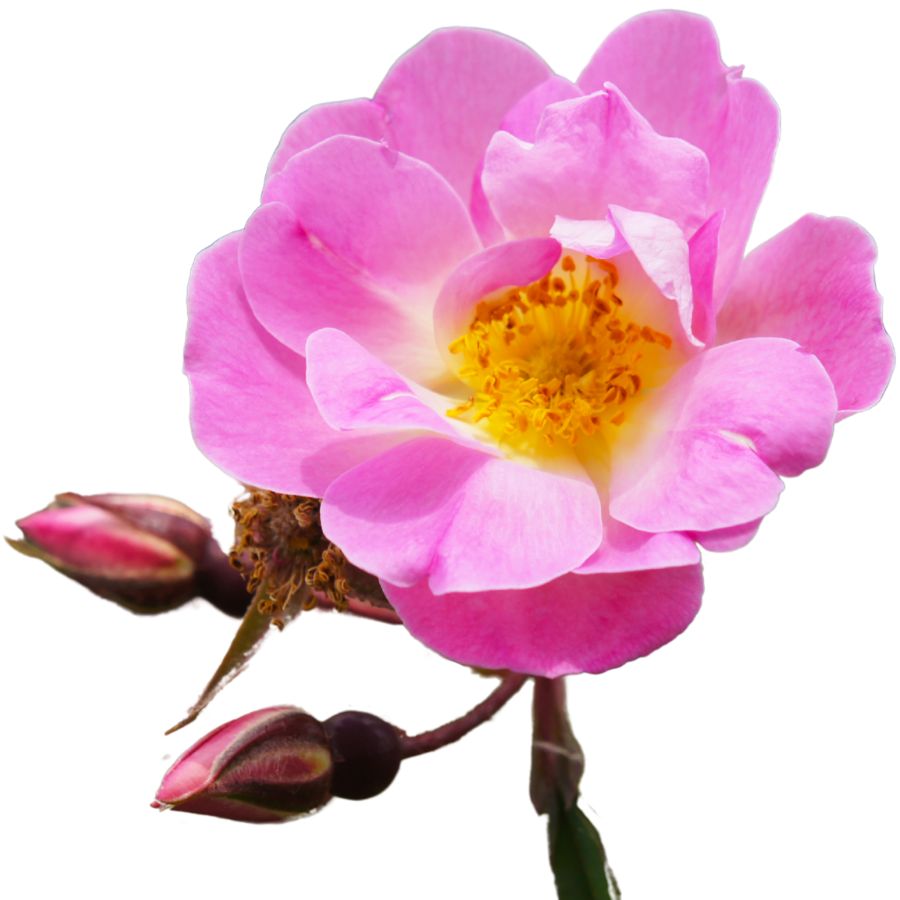
The prickly wild rose has sharp straight thorns, five-petaled pink flowers, and bright red hips that form once the petals fall. You can eat the hips raw after removing the hairy seeds inside, but they’re usually dried or boiled into tea or syrup.
Its hips have a tangy, slightly sweet flavor with a texture like soft fruit leather when cooked down. Don’t confuse it with other wild rose species whose hips are also edible but less flavorful.
The petals are edible too and can be added to salads or steeped into a delicate floral infusion. Leaves and stems should be avoided; they’re not toxic, but they aren’t edible either.
There’s a high amount of vitamin C in the hips, but heating them too long can reduce that. If you’re drying them for storage, slice them in half and scrape out the inner hairs first.
Toxic Plants That Look Like Edible Plants
There are plenty of wild edibles to choose from, but some toxic native plants closely resemble them. Mistaking the wrong one can lead to severe illness or even death, so it’s important to know exactly what you’re picking.
Poison Hemlock (Conium maculatum)
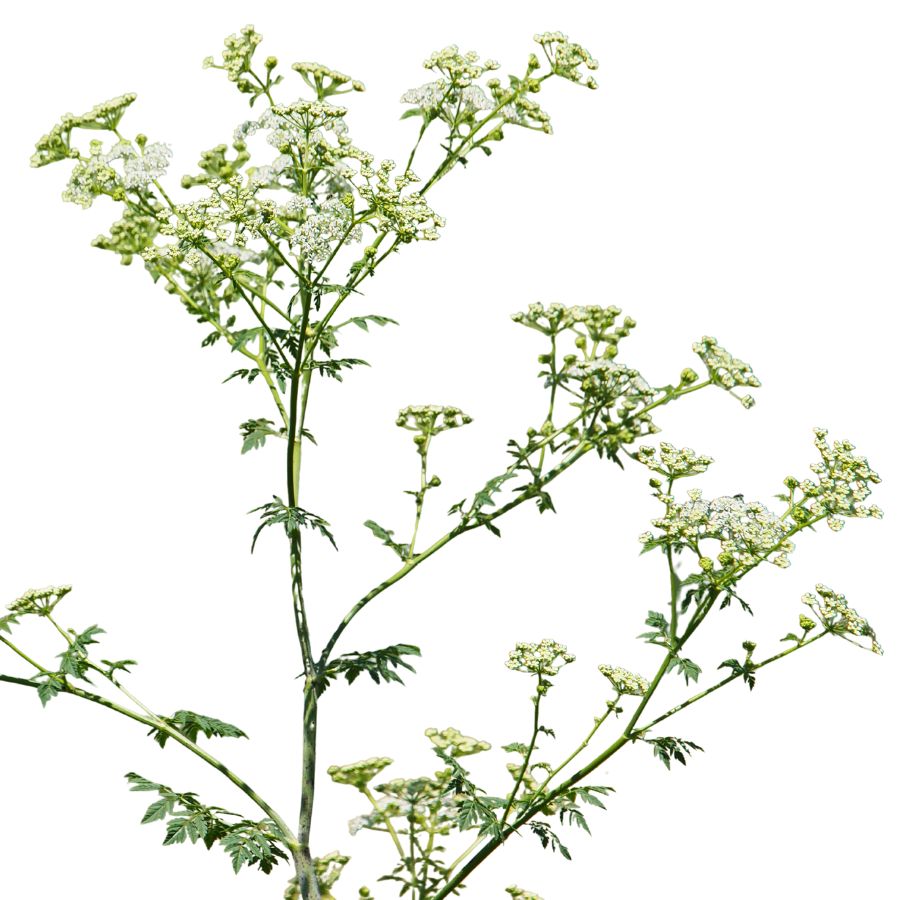
Often mistaken for: Wild carrot (Daucus carota)
Poison hemlock is a tall plant with lacy leaves and umbrella-like clusters of tiny white flowers. It has smooth, hollow stems with purple blotches and grows in sunny places like roadsides, meadows, and stream banks.
Unlike wild carrot, which has hairy stems and a dark central floret, poison hemlock has a musty odor and no flower center spot. It’s extremely toxic; just a small amount can be fatal, and even touching the sap can irritate the skin.
Water Hemlock (Cicuta spp.)
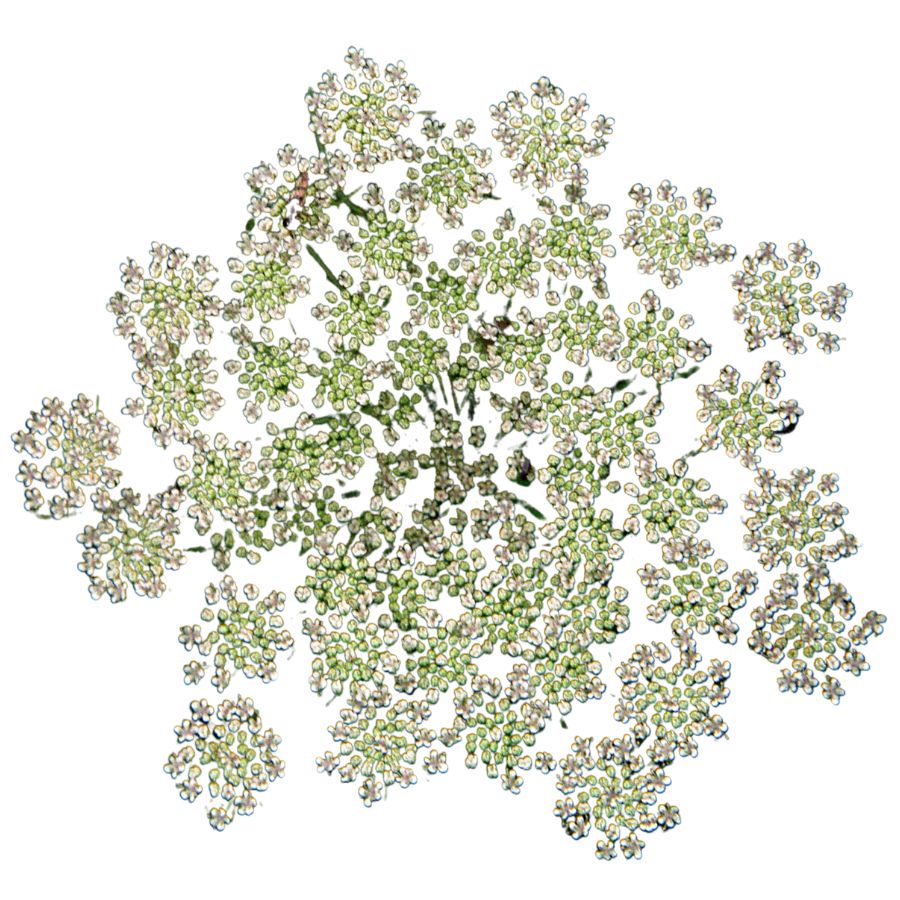
Often mistaken for: Wild parsnip (Pastinaca sativa) or wild celery (Apium spp.)
Water hemlock is a tall, branching plant with umbrella-shaped clusters of small white flowers. It grows in wet places like stream banks, marshes, and ditches, with stems that often show purple streaks or spots.
It can be confused with wild parsnip or wild celery, but its thick, hollow roots have internal chambers and release a yellow, foul-smelling sap when cut. Water hemlock is the most toxic plant in North America, and just a small amount can cause seizures, respiratory failure, and death.
False Hellebore (Veratrum viride)
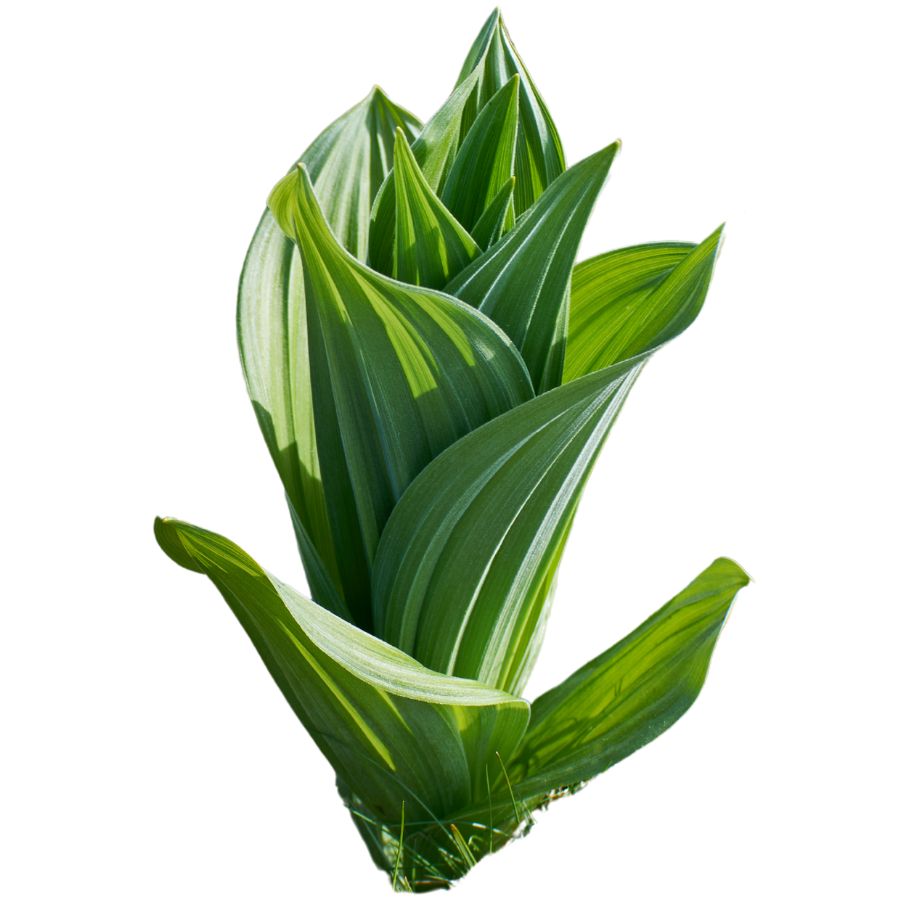
Often mistaken for: Ramps (Allium tricoccum)
False hellebore is a tall plant with broad, pleated green leaves that grow in a spiral from the base, often appearing early in spring. It grows in moist woods, meadows, and along streams.
It’s commonly mistaken for ramps, but ramps have a strong onion or garlic smell, while false hellebore is odorless and later grows a tall flower stalk. The plant is highly toxic, and eating any part can cause nausea, a slowed heart rate, and even death due to its alkaloids that affect the nervous and cardiovascular systems.
Death Camas (Zigadenus spp.)
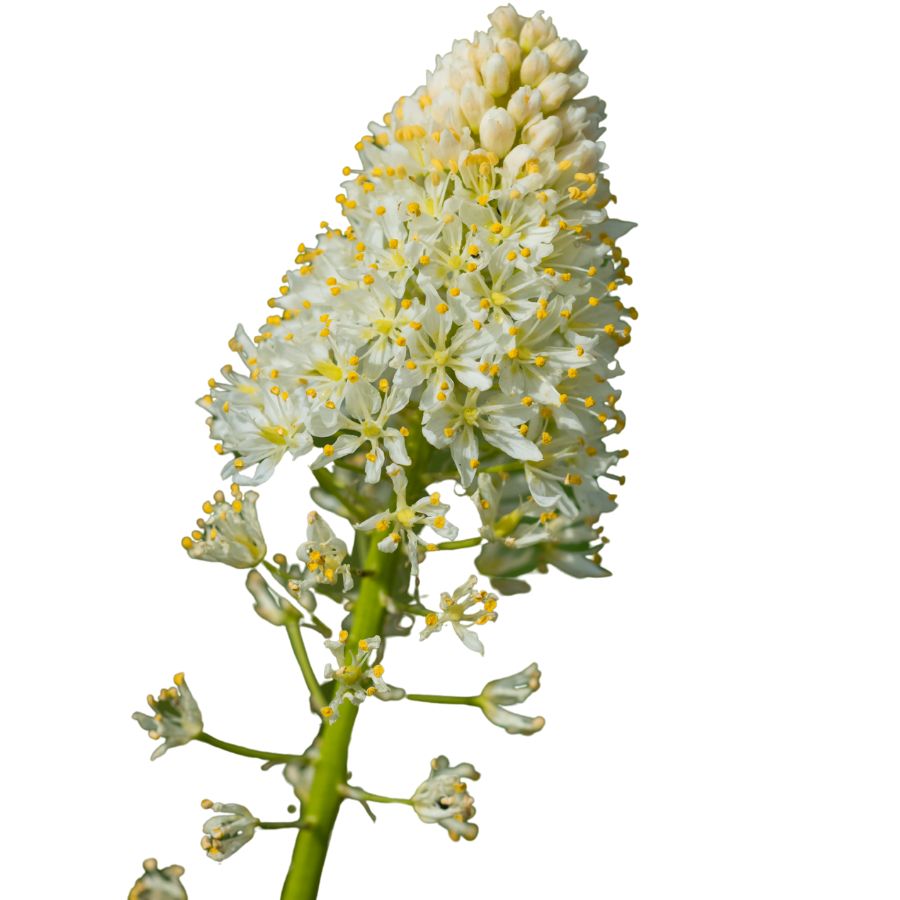
Often mistaken for: Wild onion or wild garlic (Allium spp.)
Death camas is a slender, grass-like plant that grows from underground bulbs and is found in open woods, meadows, and grassy hillsides. It has small, cream-colored flowers in loose clusters atop a tall stalk.
It’s often confused with wild onion or wild garlic due to their similar narrow leaves and habitats, but only Allium plants have a strong onion or garlic scent, while death camas has none. The plant is extremely poisonous, especially the bulbs, and even a small amount can cause nausea, vomiting, a slowed heartbeat, and potentially fatal respiratory failure.
Buckthorn Berries (Rhamnus spp.)
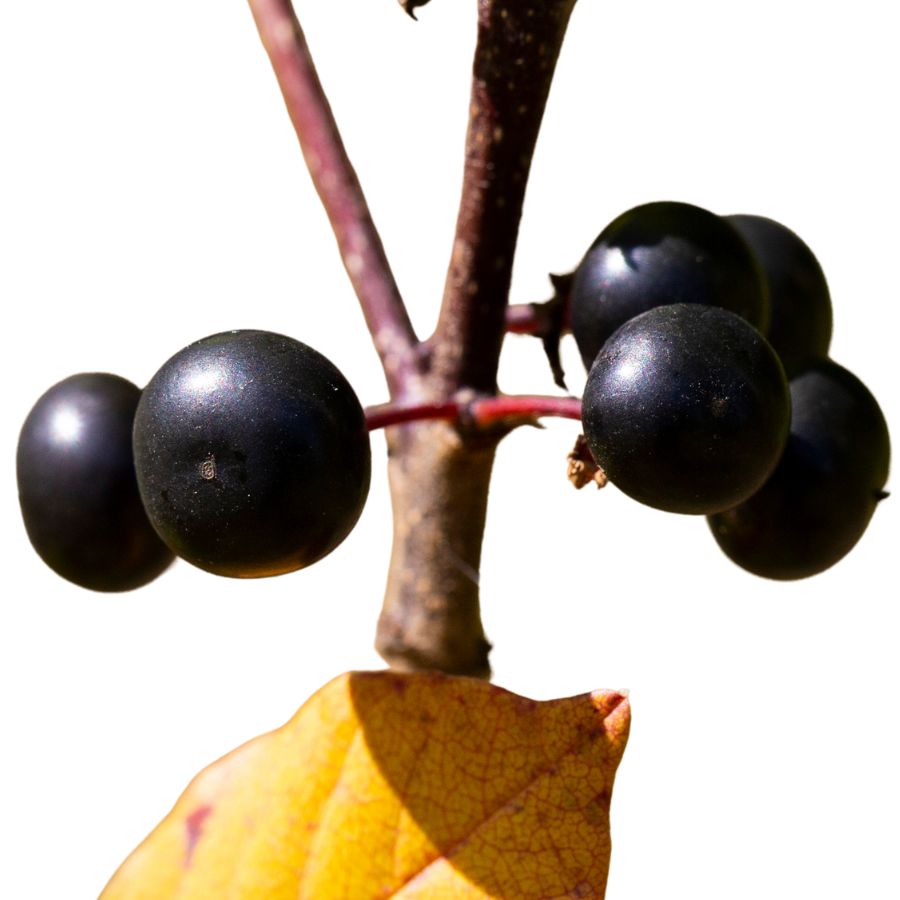
Often mistaken for: Elderberries (Sambucus spp.)
Buckthorn is a shrub or small tree often found along woodland edges, roadsides, and disturbed areas. It produces small, round berries that ripen to dark purple or black and usually grow in loose clusters.
These berries are sometimes mistaken for elderberries and other wild fruits, which also grow in dark clusters, but elderberries form flat-topped clusters on reddish stems while buckthorn berries are more scattered. Buckthorn berries are unsafe to eat as they contain compounds that can cause cramping, vomiting, and diarrhea, and large amounts may lead to dehydration and serious digestive problems.
Mayapple (Podophyllum peltatum)
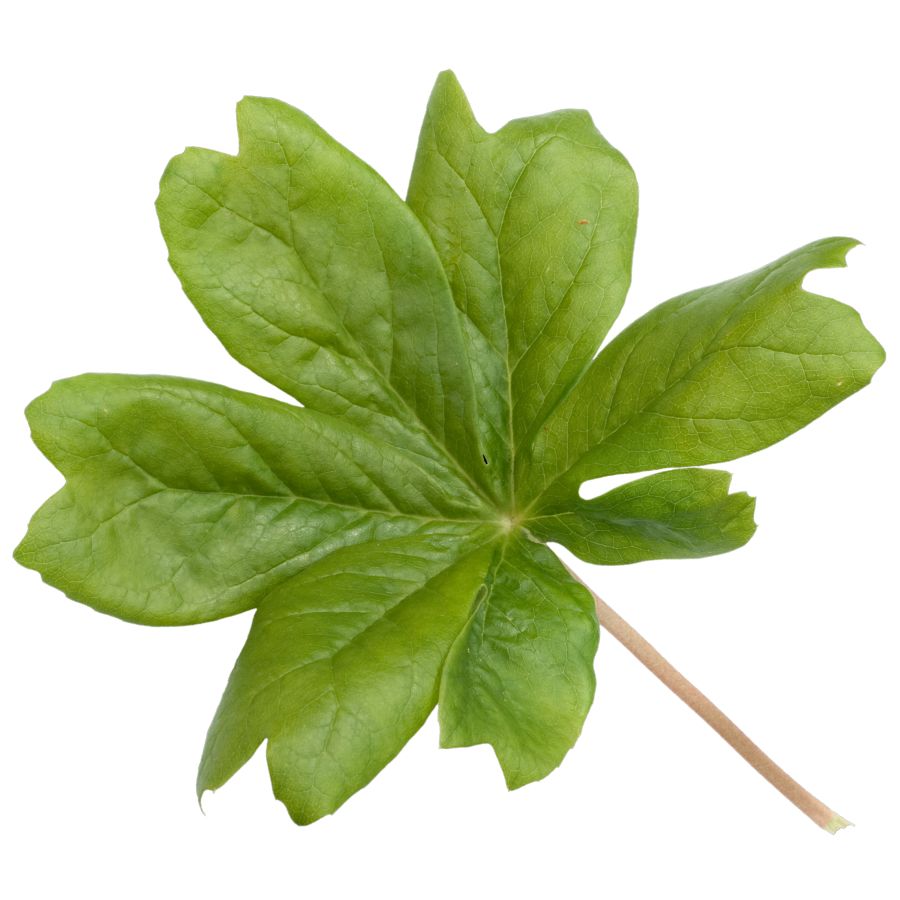
Often mistaken for: Wild grapes (Vitis spp.)
Mayapple is a low-growing plant found in shady forests and woodland clearings. It has large, umbrella-like leaves and produces a single pale fruit hidden beneath the foliage.
The unripe fruit resembles a small green grape, causing confusion with wild grapes, which grow in woody clusters on vines. All parts of the mayapple are toxic except the fully ripe, yellow fruit, which is only safe in small amounts. Eating unripe fruit or other parts can lead to nausea, vomiting, and severe dehydration.
Virginia Creeper (Parthenocissus quinquefolia)
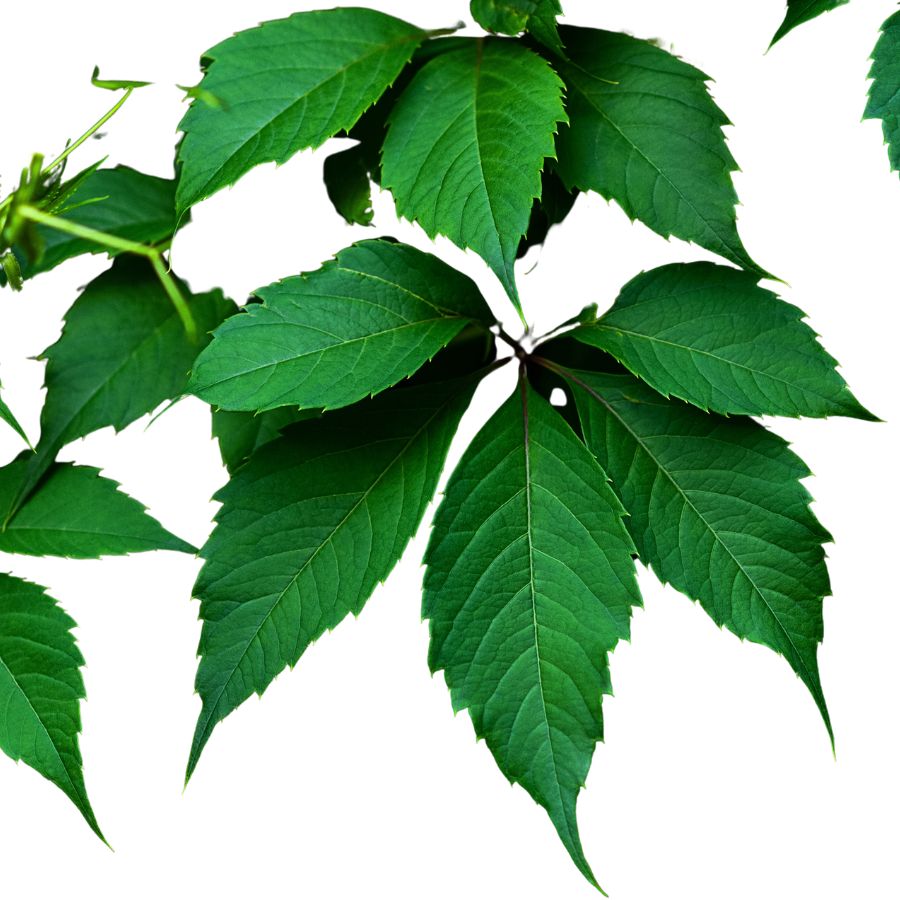
Often mistaken for: Wild grapes (Vitis spp.)
Virginia creeper is a fast-growing vine found on fences, trees, and forest edges. It has five leaflets per stem and produces small, bluish-purple berries from late summer to fall.
It’s often confused with wild grapes since both are climbing vines with similar berries, but grapevines have large, lobed single leaves and tighter fruit clusters. Virginia creeper’s berries are toxic to humans and contain oxalate crystals that can cause nausea, vomiting, and throat irritation.
Castor Bean (Ricinus communis)
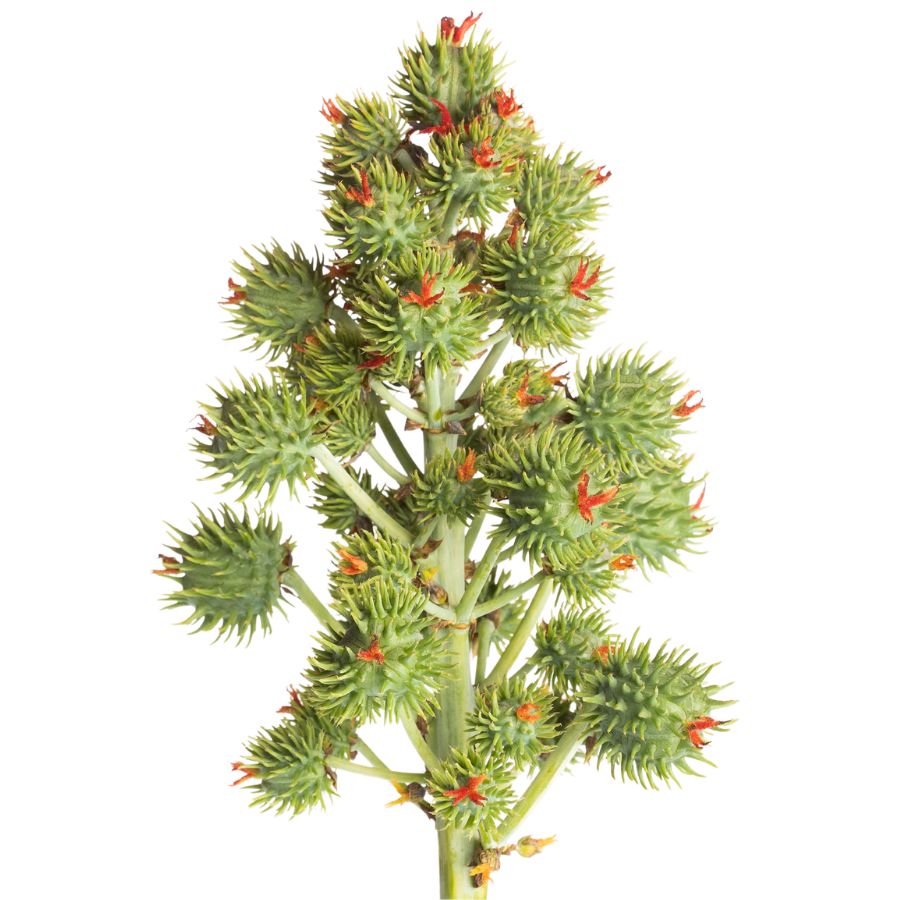
Often mistaken for: Wild rhubarb (Rumex spp. or Rheum spp.)
Castor bean is a bold plant with large, lobed leaves and tall red or green stalks, often found in gardens, along roadsides, and in disturbed areas in warmer regions in the US. Its red-tinged stems and overall size can resemble wild rhubarb to the untrained eye.
Unlike rhubarb, castor bean plants produce spiny seed pods containing glossy, mottled seeds that are extremely toxic. These seeds contain ricin, a deadly compound even in small amounts. While all parts of the plant are toxic, the seeds are especially dangerous and should never be handled or ingested.
A Quick Reminder
Before we get into the specifics about where and how to find these mushrooms, we want to be clear that before ingesting any wild mushroom, it should be identified with 100% certainty as edible by someone qualified and experienced in mushroom identification, such as a professional mycologist or an expert forager. Misidentification of mushrooms can lead to serious illness or death.
All mushrooms have the potential to cause severe adverse reactions in certain individuals, even death. If you are consuming mushrooms, it is crucial to cook them thoroughly and properly and only eat a small portion to test for personal tolerance. Some people may have allergies or sensitivities to specific mushrooms, even if they are considered safe for others.
The information provided in this article is for general informational and educational purposes only. Foraging for wild mushrooms involves inherent risks.
How to Get the Best Results Foraging
Safety should always come first when it comes to foraging. Whether you’re in a rural forest or a suburban greenbelt, knowing how to harvest wild foods properly is a key part of staying safe and respectful in the field.
Always Confirm Plant ID Before You Harvest Anything
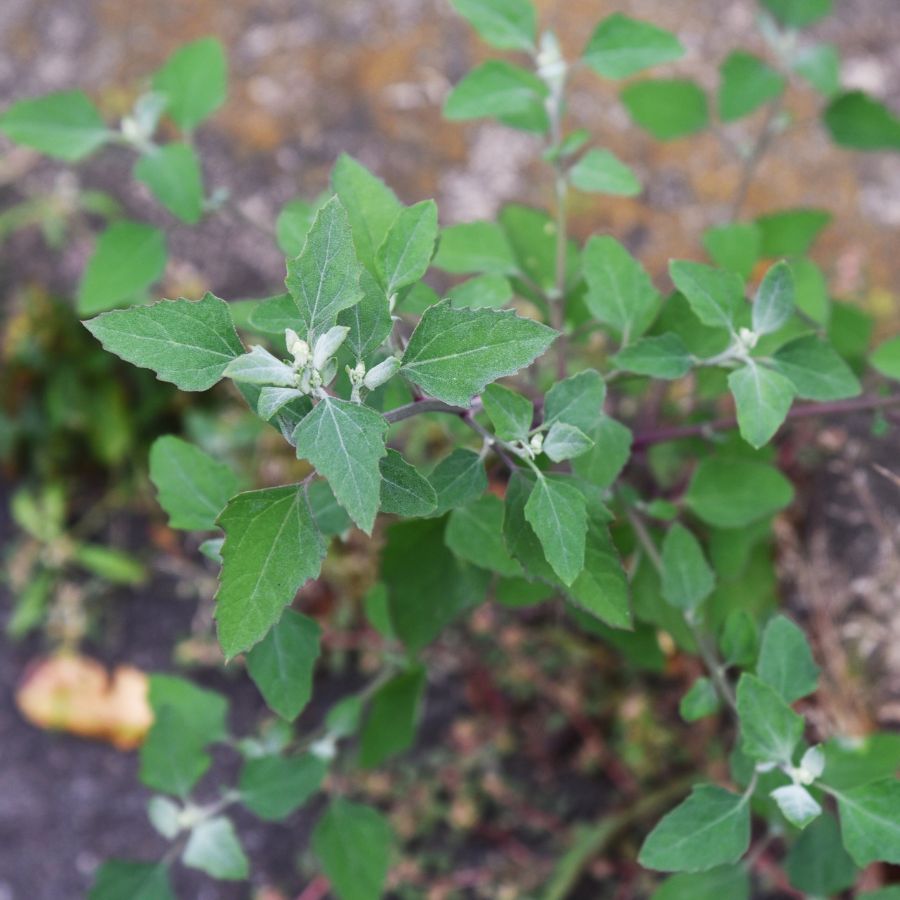
Knowing exactly what you’re picking is the most important part of safe foraging. Some edible plants have nearly identical toxic lookalikes, and a wrong guess can make you seriously sick.
Use more than one reliable source to confirm your ID, like field guides, apps, and trusted websites. Pay close attention to small details. Things like leaf shape, stem texture, and how the flowers or fruits are arranged all matter.
Not All Edible Plants Are Safe to Eat Whole
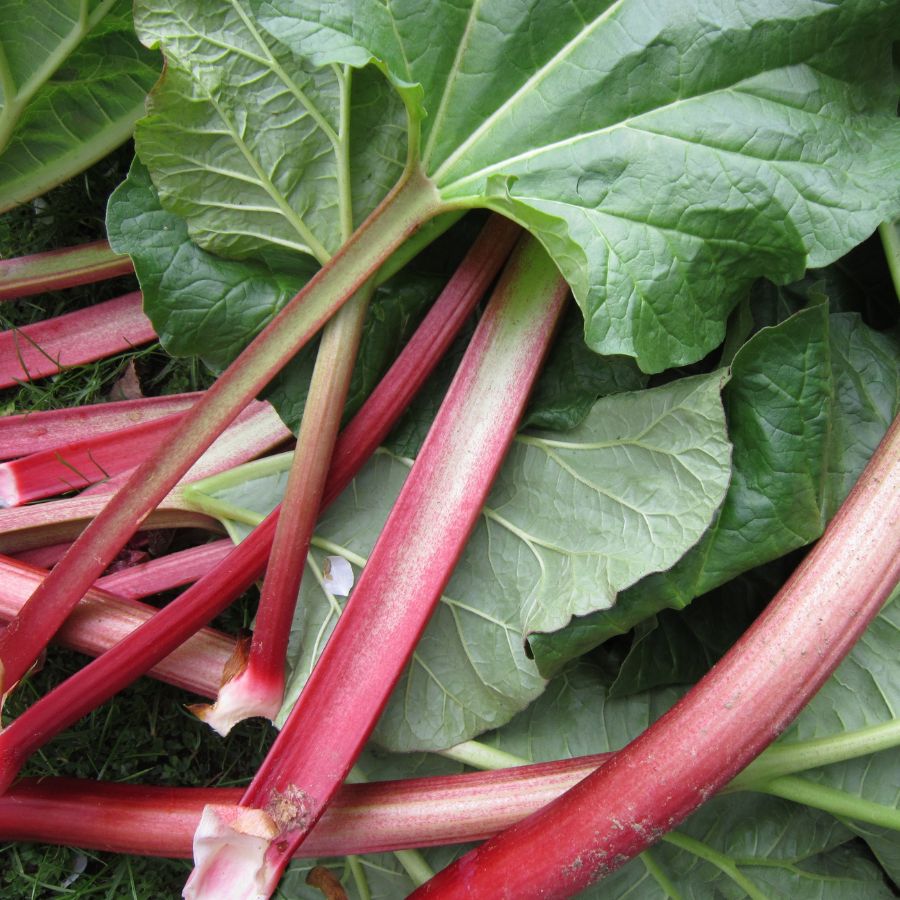
Just because a plant is edible doesn’t mean every part of it is safe. Some plants have leaves, stems, or seeds that can be toxic if eaten raw or prepared the wrong way.
For example, pokeweed is only safe when young and properly cooked, while elderberries need to be heated before eating. Rhubarb stems are fine, but the leaves are poisonous. Always look up which parts are edible and how they should be handled.
Avoid Foraging in Polluted or Contaminated Areas
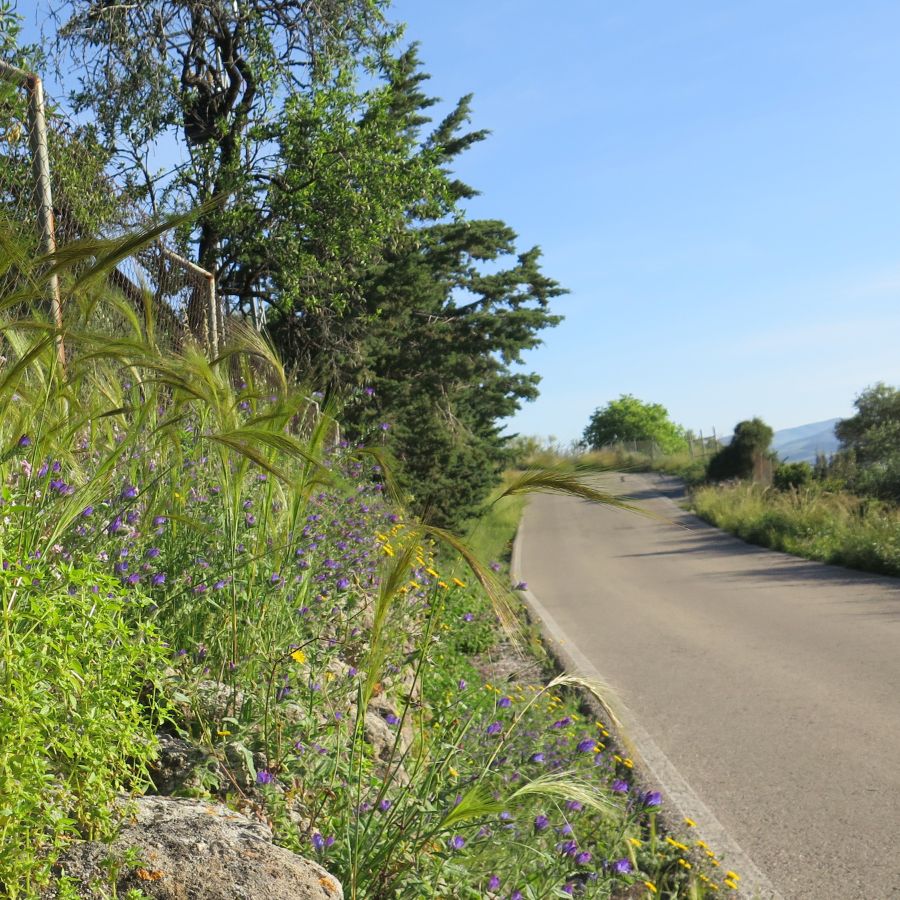
Where you forage matters just as much as what you pick. Plants growing near roads, buildings, or farmland might be coated in chemicals or growing in polluted soil.
Even safe plants can take in harmful substances from the air, water, or ground. Stick to clean, natural areas like forests, local parks that allow foraging, or your own yard when possible.
Don’t Harvest More Than What You Need
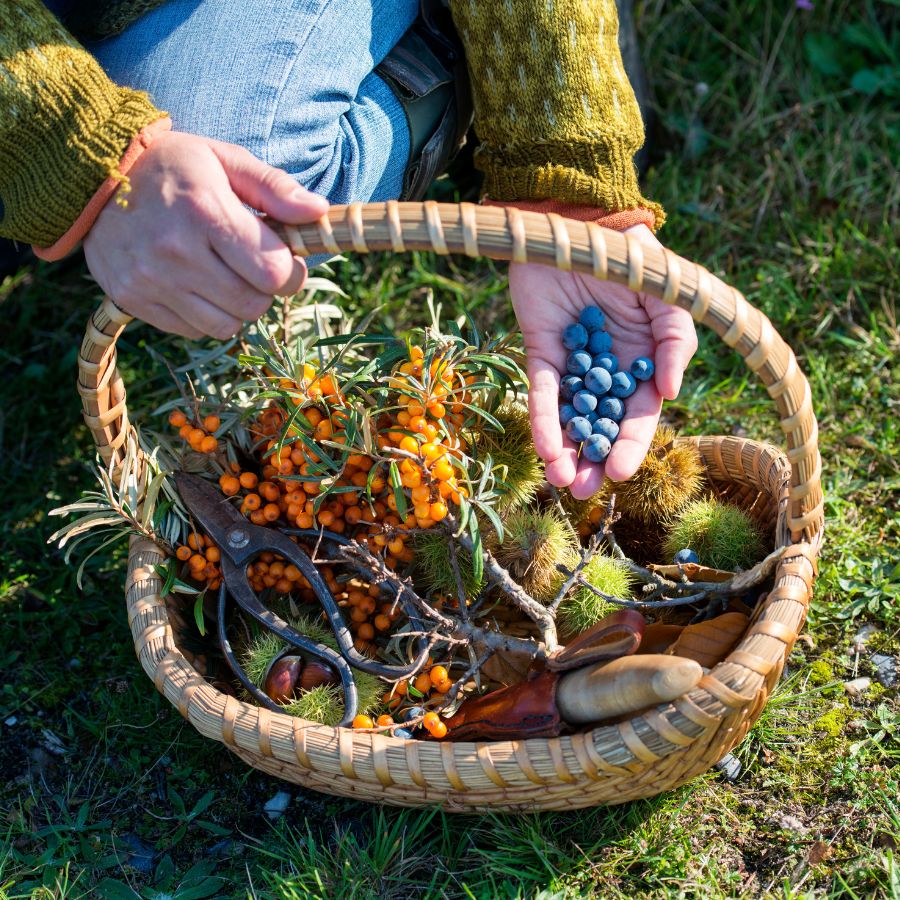
When you forage, take only what you plan to use. Overharvesting can hurt local plant populations and reduce future growth in that area.
Leaving plenty behind helps plants reproduce and supports wildlife that depends on them. It also ensures other foragers have a chance to enjoy the same resources.
Protect Yourself and Your Finds with Proper Foraging Gear
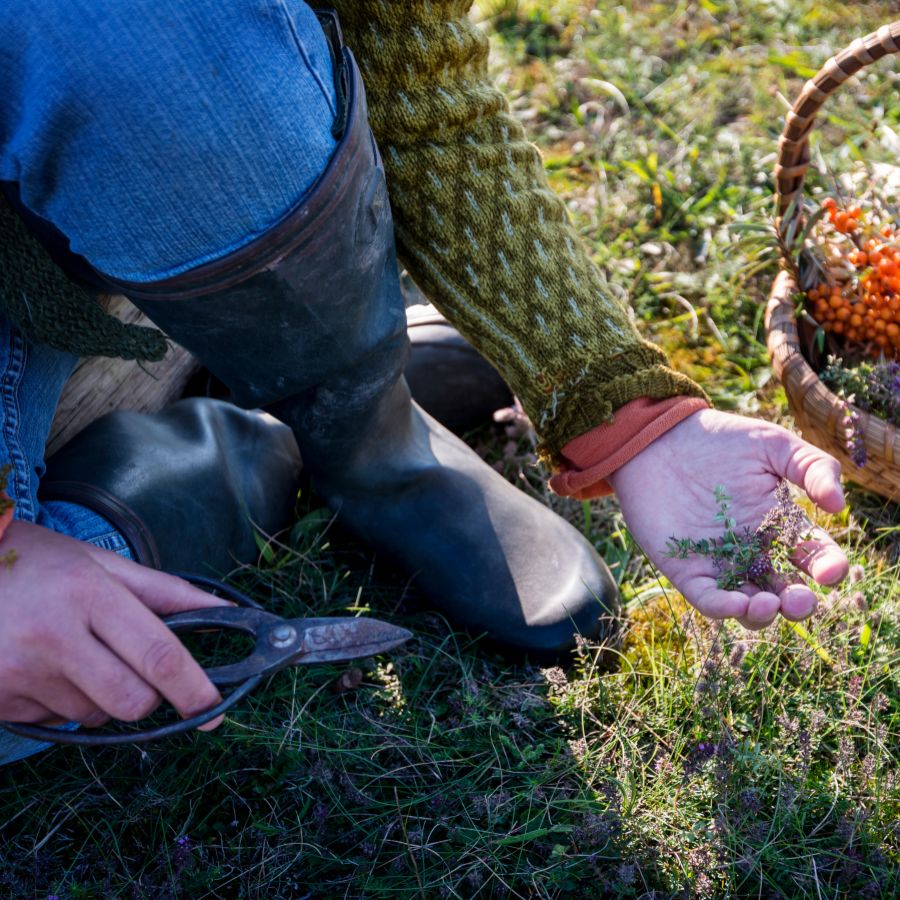
Having the right tools makes foraging easier and safer. Gloves protect your hands from irritants like stinging nettle, and a good knife or scissors lets you harvest cleanly without damaging the plant.
Use a basket or breathable bag to carry what you collect. Plastic bags hold too much moisture and can cause your greens to spoil before you get home.
This forager’s toolkit covers the essentials for any level of experience.
Watch for Allergic Reactions When Trying New Wild Foods

Even if a wild plant is safe to eat, your body might react to it in unexpected ways. It’s best to try a small amount first and wait to see how you feel.
Be extra careful with kids or anyone who has allergies. A plant that’s harmless for one person could cause a reaction in someone else.
Check Local Rules Before Foraging on Any Land
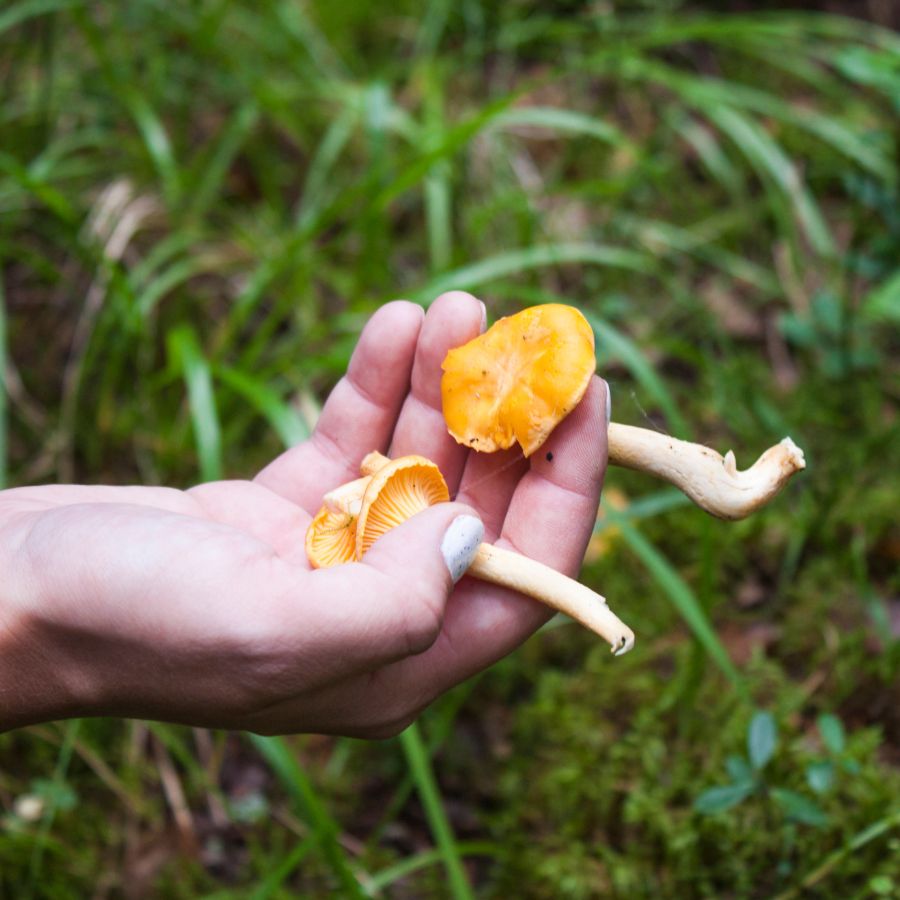
Before you start foraging, make sure you know the rules for the area you’re in. What’s allowed in one spot might be completely off-limits just a few miles away.
Some public lands permit limited foraging, while others, like national parks, usually don’t allow it at all. If you’re on private property, always get permission first.
Before you head out
Before embarking on any foraging activities, it is essential to understand and follow local laws and guidelines. Always confirm that you have permission to access any land and obtain permission from landowners if you are foraging on private property. Trespassing or foraging without permission is illegal and disrespectful.
For public lands, familiarize yourself with the foraging regulations, as some areas may restrict or prohibit the collection of mushrooms or other wild foods. These regulations and laws are frequently changing so always verify them before heading out to hunt. What we have listed below may be out of date and inaccurate as a result.
Where to Find Forageables in the State
There is a range of foraging spots where edible plants grow naturally and often in abundance:
| Plant | Locations |
| Wild Leek (Allium tricoccum) | – Hiawatha National Forest – Porcupine Mountains Wilderness State Park – Beech-maple forests near St. Joseph |
| Wood Sorrel (Oxalis stricta) | – Yankee Springs Recreation Area – Hartwick Pines State Park – Waterloo State Recreation Area |
| Stinging Nettle (Urtica dioica) | – Shiawassee River State Game Area – Lake Hudson State Recreation Area – Sleepy Hollow State Park |
| Dandelion (Taraxacum officinale) | – Pinckney Recreation Area – Proud Lake Recreation Area – Hiawatha National Forest |
| Lamb’s Quarters (Chenopodium album) | – Allegan State Game Area – Hayes State Park – Manistee National Forest |
| Sheep Sorrel (Rumex acetosella) | – Petoskey State Park – Huron National Forest – Negwegon State Park |
| Milkweed (Asclepias syriaca) | – Fort Custer State Recreation Area – Warren Dunes State Park – Sleepy Hollow State Park |
| Chicory (Cichorium intybus) | – Island Lake Recreation Area – Brighton State Recreation Area – Rifle River Recreation Area |
| Common Plantain (Plantago major) | – Maybury State Park – Waterloo State Recreation Area – Tahquamenon Falls State Park |
| Narrowleaf Plantain (Plantago lanceolata) | – Van Buren State Park – Craig Lake State Park – Ionia State Recreation Area |
| Cattail (Typha latifolia) | – Seney National Wildlife Refuge – Shiawassee National Wildlife Refuge – Holland State Park |
| Curled Dock (Rumex crispus) | – Waterloo State Recreation Area – Huron Meadows Metropark – Hiawatha National Forest |
| Yellow Dock (Rumex obtusifolius) | – Pictured Rocks National Lakeshore – Sleeping Bear Dunes National Lakeshore – Huron-Manistee National Forests |
| Jerusalem Artichoke (Helianthus tuberosus) | – Kensington Metropark – Stony Creek Metropark – Holland State Park |
| Wild Bergamot (Monarda fistulosa) | – Hartwick Pines State Park – Porcupine Mountains Wilderness State Park – Waterloo State Recreation Area |
| Serviceberry (Amelanchier spp.) | – Tahquamenon Falls State Park – Huron-Clinton Metroparks – Isle Royale National Park |
| Black Raspberry (Rubus occidentalis) | – Waterloo State Recreation Area – Pinckney Recreation Area – Huron-Clinton Metroparks |
| Red Raspberry (Rubus idaeus) | – Porcupine Mountains Wilderness State Park – Hiawatha National Forest – Isle Royale National Park |
| Blackberry (Rubus spp.) | – Huron-Clinton Metroparks – Waterloo State Recreation Area – Hiawatha National Forest |
| Wild Strawberry (Fragaria virginiana) | – Sleeping Bear Dunes National Lakeshore – Isle Royale National Park – Huron-Clinton Metroparks |
| Groundnut (Apios americana) | – Shiawassee National Wildlife Refuge – Huron River Watershed – Waterloo State Recreation Area |
| Wild Grape (Vitis riparia) | – Kensington Metropark – Huron-Clinton Metroparks – Hiawatha National Forest |
| Sumac (Rhus typhina) | – Waterloo State Recreation Area – Huron-Clinton Metroparks – Porcupine Mountains Wilderness State Park |
| Autumn Olive (Elaeagnus umbellata) | – Kensington Metropark – Stony Creek Metropark – Huron-Clinton Metroparks |
| Blueberry (Vaccinium angustifolium) | – Hiawatha National Forest – Isle Royale National Park – Porcupine Mountains Wilderness State Park |
| Highbush Cranberry (Viburnum trilobum) | – Sleeping Bear Dunes National Lakeshore – Huron-Clinton Metroparks – Waterloo State Recreation Area |
| Elderberry (Sambucus nigra subsp. canadensis) | – Shiawassee National Wildlife Refuge – Huron-Clinton Metroparks – Waterloo State Recreation Area |
| Prickly Wild Rose (Rosa acicularis) | – Isle Royale National Park – Porcupine Mountains Wilderness State Park – Hiawatha National Forest |
| Watercress (Nasturtium officinale) | – Shiawassee River State Game Area – Huron River Watershed – Waterloo State Recreation Area |
| Wild Mint (Mentha arvensis) | – Sleeping Bear Dunes National Lakeshore – Huron-Clinton Metroparks – Waterloo State Recreation Area |
| Peppermint (Mentha × piperita) | – Kensington Metropark – Huron-Clinton Metroparks – Waterloo State Recreation Area |
| Spearmint (Mentha spicata) | – Stony Creek Metropark – Huron-Clinton Metroparks – Waterloo State Recreation Area |
| Chokecherry (Prunus virginiana) | – Porcupine Mountains Wilderness State Park – Hiawatha National Forest – Isle Royale National Park |
| Hawthorn (Crataegus spp.) | – Waterloo State Recreation Area – Huron-Clinton Metroparks – Hiawatha National Forest |
| Wild Plum (Prunus americana) | – Sleeping Bear Dunes National Lakeshore – Huron-Clinton Metroparks – Waterloo State Recreation Area |
| Mayapple (Podophyllum peltatum) | – Porcupine Mountains Wilderness State Park – Hiawatha National Forest – Waterloo State Recreation Area |
| Beech Nut (Fagus grandifolia) | – Huron-Manistee National Forests – Porcupine Mountains Wilderness State Park – Hiawatha National Forest |
| Hickory Nut (Carya spp.) | – Waterloo State Recreation Area – Huron-Clinton Metroparks – Hiawatha National Forest |
| Black Walnut (Juglans nigra) | – Kensington Metropark – Huron-Clinton Metroparks – Waterloo State Recreation Area |
| Acorn (Quercus spp.) | – Sleeping Bear Dunes National Lakeshore – Huron-Clinton Metroparks – Waterloo State Recreation Area |
| Wild Carrot (Daucus carota) | – Stony Creek Metropark – Huron-Clinton Metroparks – Waterloo State Recreation Area |
| Violet (Viola sororia) | – Porcupine Mountains Wilderness State Park – Hiawatha National Forest – Waterloo State Recreation Area |
| Clover (Trifolium pratense, Trifolium repens) | – Kensington Metropark – Huron-Clinton Metroparks – Waterloo State Recreation Area |
| Goldenrod (Solidago spp.) | – Sleeping Bear Dunes National Lakeshore – Huron-Clinton Metroparks – Waterloo State Recreation Area |
| Horseradish (Armoracia rusticana) | – Stony Creek Metropark – Huron-Clinton Metroparks – Waterloo State Recreation Area |
| Evening Primrose (Oenothera biennis) | – Porcupine Mountains Wilderness State Park – Hiawatha National Forest – Waterloo State Recreation Area |
| Thistle (Cirsium spp.) | – Sleeping Bear Dunes National Lakeshore – Huron-Clinton Metroparks – Waterloo State Recreation Area |
| Wild Parsnip (Pastinaca sativa) | – Kensington Metropark – Huron-Clinton Metroparks – Waterloo State Recreation Area |
| Burdock (Arctium minus) | – Stony Creek Metropark – Huron-Clinton Metroparks – Waterloo State Recreation Area |
| Yarrow (Achillea millefolium) | – Porcupine Mountains Wilderness State Park – Hiawatha National Forest – Waterloo State Recreation Area |
| Basswood (Tilia americana) | – Sleeping Bear Dunes National Lakeshore – Huron-Clinton Metroparks – Waterloo State Recreation Area |
| Wild Mustard (Sinapis arvensis) | – Kensington Metropark – Huron-Clinton Metroparks – Waterloo State Recreation Area |
| Garlic Mustard (Alliaria petiolata) | – Stony Creek Metropark – Huron-Clinton Metroparks – Waterloo State Recreation Area |
| Daylily (Hemerocallis fulva) | – Porcupine Mountains Wilderness State Park – Hiawatha National Forest – Waterloo State Recreation Area |
| Fireweed (Chamaenerion angustifolium) | – Sleeping Bear Dunes National Lakeshore – Huron-Clinton Metroparks – Waterloo State Recreation Area |
| Spicebush (Lindera benzoin) | – Kensington Metropark – Huron-Clinton Metroparks – Waterloo State Recreation Area |
| Wild Onion (Allium canadense) | – Stony Creek Metropark – Huron-Clinton Metroparks – Waterloo State Recreation Area |
Peak Foraging Seasons
Different edible plants grow at different times of year, depending on the season and weather. Timing your search makes all the difference.
Spring
Spring brings a fresh wave of wild edible plants as the ground thaws and new growth begins:
| Plant | Months | Best Weather Conditions |
| Wild Leek (Allium tricoccum) | April–June | Cool, moist forest soil after snowmelt |
| Wood Sorrel (Oxalis stricta) | April–June | Mild temps after rain, partial sunlight |
| Stinging Nettle (Urtica dioica) | April–June | Damp, shaded areas during warm days |
| Dandelion (Taraxacum officinale) | March–May | Sunny days after rain |
| Curled Dock (Rumex crispus) | April–May | Cool, moist fields and meadows |
| Yellow Dock (Rumex obtusifolius) | April–May | Rainy periods with mild sun |
| Violet (Viola sororia) | April–May | Cool mornings with moist soil |
| Clover (Trifolium pratense, Trifolium repens) | April–May | Sunny clearings after rainfall |
| Mayapple (Podophyllum peltatum) | April–May | Shady forest floors during warm spells |
| Wild Carrot (Daucus carota) | May | Loamy soils with full sun |
| Garlic Mustard (Alliaria petiolata) | April–June | Cool, moist woods after rain |
| Wild Onion (Allium canadense) | April–June | Sunny open woods or fields |
Summer
Summer is a peak season for foraging, with fruits, flowers, and greens growing in full force:
| Plant | Months | Best Weather Conditions |
| Lamb’s Quarters (Chenopodium album) | June–August | Sunny fields after light rain |
| Sheep Sorrel (Rumex acetosella) | June–August | Dry sandy soils in open sun |
| Milkweed (Asclepias syriaca) | June–August | Dry days after recent rain |
| Chicory (Cichorium intybus) | June–August | Hot, dry roadsides |
| Common Plantain (Plantago major) | June–August | Sunny, compacted soil |
| Narrowleaf Plantain (Plantago lanceolata) | June–August | Dry, open disturbed ground |
| Cattail (Typha latifolia) | June–August | Still, warm wetlands |
| Wild Bergamot (Monarda fistulosa) | July–August | Dry uplands with full sun |
| Serviceberry (Amelanchier spp.) | June | Early warm spells before birds get them |
| Wild Strawberry (Fragaria virginiana) | June | Sunny forest edges and meadows |
| Black Raspberry (Rubus occidentalis) | July | Warm, sunny thickets |
| Red Raspberry (Rubus idaeus) | July | Sunny areas with moist soil |
| Blackberry (Rubus spp.) | August | Hot, sunny thickets after rain |
| Groundnut (Apios americana) | August | Wet stream banks during humid days |
| Wild Grape (Vitis riparia) | August | Sunny forest margins |
| Wild Mint (Mentha arvensis) | July–August | Cool, damp mornings near water |
| Peppermint (Mentha × piperita) | July–August | Shady, wet areas in early sun |
| Spearmint (Mentha spicata) | July–August | Moist meadows with partial sun |
| Chokecherry (Prunus virginiana) | August | Warm, sunny woods and fields |
| Wild Plum (Prunus americana) | August | Hot days after rainfall |
| Wild Mustard (Sinapis arvensis) | June–August | Sunny disturbed fields |
| Daylily (Hemerocallis fulva) | June–August | Sunny roadsides |
| Basswood (Tilia americana) | June | Dry weather following blooms |
| Yarrow (Achillea millefolium) | June–August | Hot, dry meadows |
| Fireweed (Chamaenerion angustifolium) | July–August | Burned or disturbed sunny areas |
| Evening Primrose (Oenothera biennis) | June–August | Open, sunny disturbed sites |
Fall
As temperatures drop, many edible plants shift underground or produce their last harvests:
| Plant | Months | Best Weather Conditions |
| Jerusalem Artichoke (Helianthus tuberosus) | September–November | Cooler days after frost |
| Sumac (Rhus typhina) | September | Dry, sunny slopes |
| Autumn Olive (Elaeagnus umbellata) | September–October | Sunny, dry hedgerows |
| Blueberry (Vaccinium angustifolium) | September | Cool, sunny days |
| Highbush Cranberry (Viburnum trilobum) | September–October | Cold nights, moist woods |
| Elderberry (Sambucus nigra subsp. canadensis) | September | After summer rains |
| Prickly Wild Rose (Rosa acicularis) | September–October | Dry weather after cool nights |
| Spicebush (Lindera benzoin) | September | Sunny forest understory |
| Wild Parsnip (Pastinaca sativa) | September | Dry, sunny fields |
| Horseradish (Armoracia rusticana) | October–November | Cool, moist soil |
| Burdock (Arctium minus) | October–November | Cool, moist meadows |
Winter
Winter foraging is limited but still possible, with hardy plants and preserved growth holding on through the cold:
| Plant | Months | Best Weather Conditions |
| Beech Nut (Fagus grandifolia) | November–January | Dry cold spells after windfall |
| Hickory Nut (Carya spp.) | October–December | Cold dry mornings |
| Black Walnut (Juglans nigra) | October–December | After frost during dry spells |
| Acorn (Quercus spp.) | October–December | Dry, cold ground conditions |
| Watercress (Nasturtium officinale) | December–March | Flowing spring-fed water on mild days |
One Final Disclaimer
The information provided in this article is for general informational and educational purposes only. Foraging for wild plants and mushrooms involves inherent risks. Some wild plants and mushrooms are toxic and can be easily mistaken for edible varieties.
Before ingesting anything, it should be identified with 100% certainty as edible by someone qualified and experienced in mushroom and plant identification, such as a professional mycologist or an expert forager. Misidentification can lead to serious illness or death.
All mushrooms and plants have the potential to cause severe adverse reactions in certain individuals, even death. If you are consuming foraged items, it is crucial to cook them thoroughly and properly and only eat a small portion to test for personal tolerance. Some people may have allergies or sensitivities to specific mushrooms and plants, even if they are considered safe for others.
Foraged items should always be fully cooked with proper instructions to ensure they are safe to eat. Many wild mushrooms and plants contain toxins and compounds that can be harmful if ingested.

